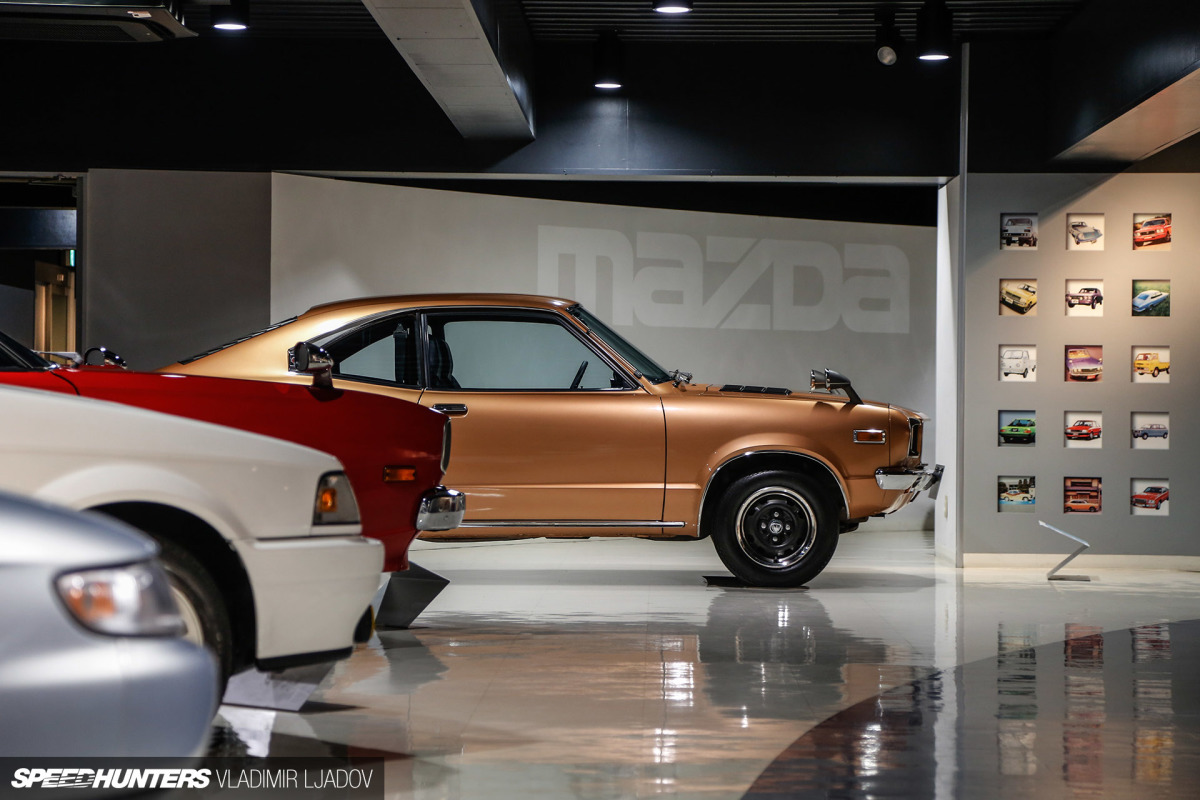
During my recent trip to Japan, I was mostly excited to experience some different car cultures – as you’d expect. But I also left a bit of time in the schedule for more traditional tourist activities, like going to a museum.
The museum in question was 500 miles from Tokyo, which is only a few hours away on a 200mph bullet train.
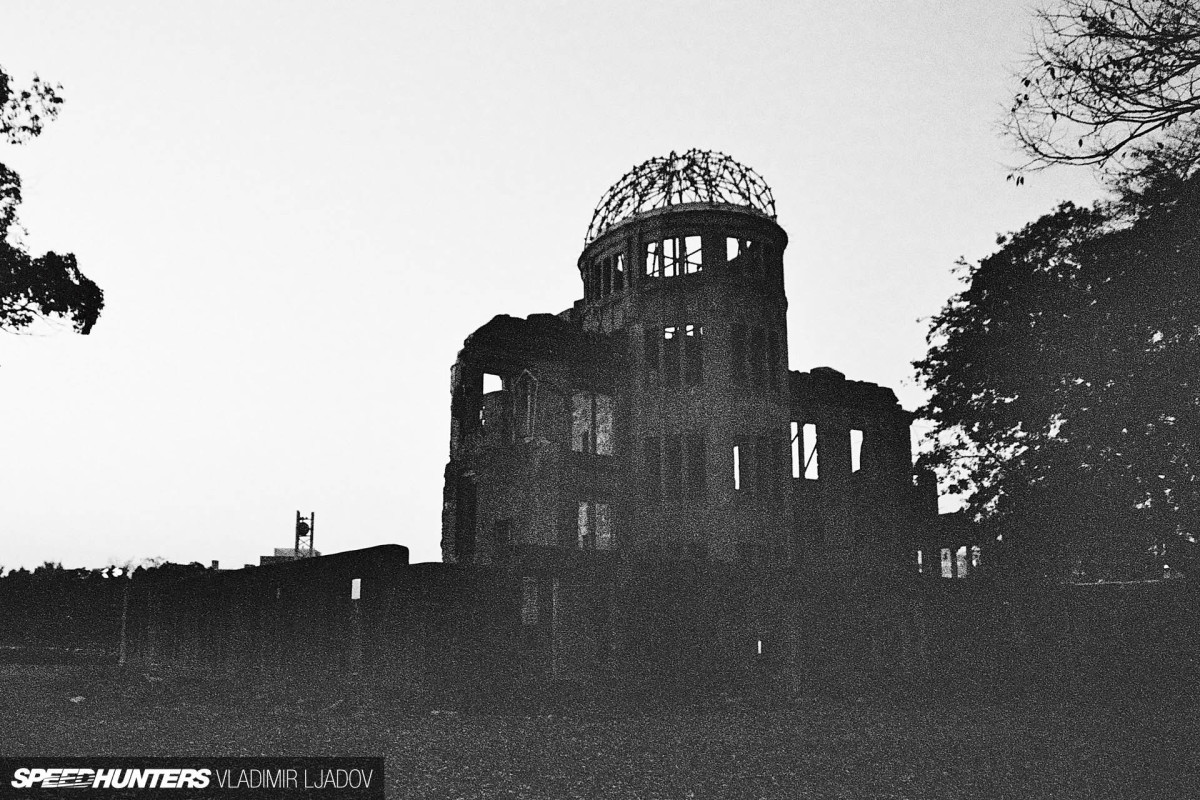
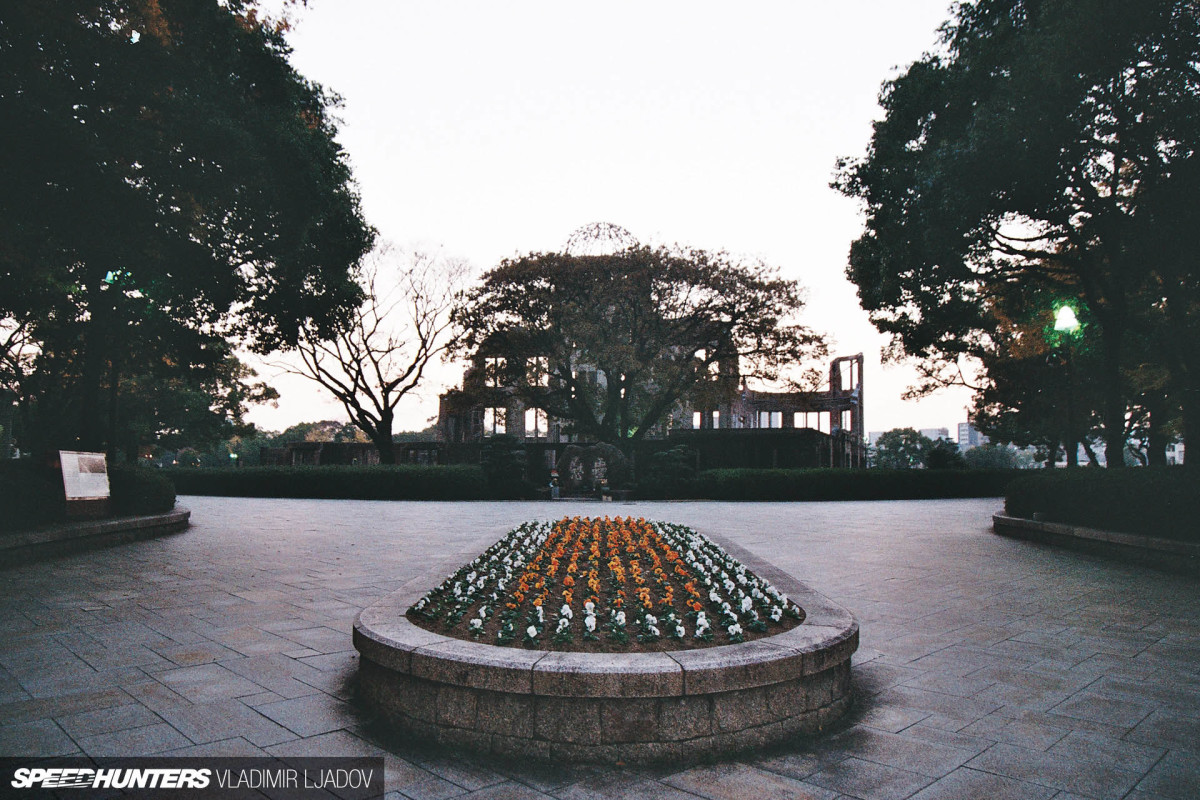
Hiroshima is a museum in itself, but not a happy one. The Atomic Bomb Dome (better known as the Hiroshima Peace Memorial,) is a stark reminder that 74 years ago everything around here was reduced to ruins in a matter of seconds.
This Industrial Promotion Hall partially survived because it was located almost directly underneath the atomic bomb explosion, and now stands as a memorial. Only three miles away stood the Mazda factory, then called Toyo Cork Kogyo Co., Ltd. A mountain between it and the hypocenter protected the plant from the blast.
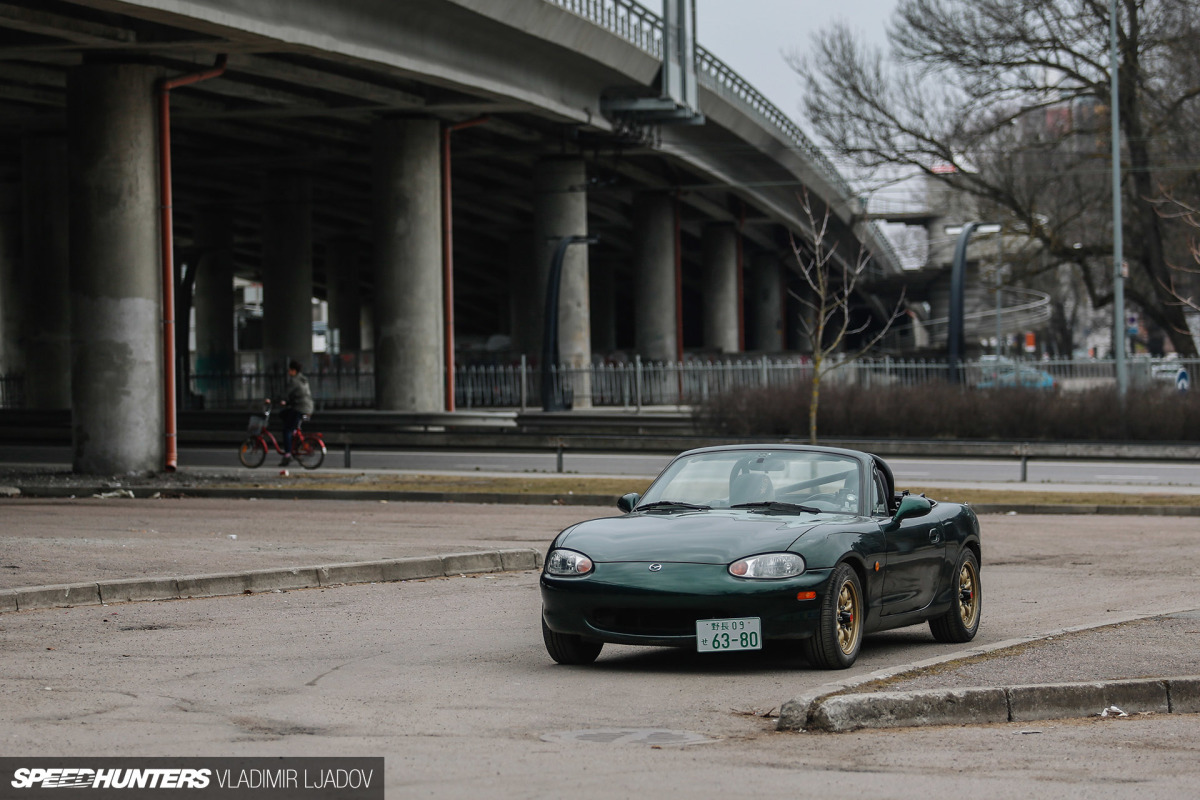
I had a personal interest in going to the Mazda Museum as I wanted to see the birthplace of my own little Roadster. On this note, am I the only one that thinks all cars look better when they’re fitted with Japanese number plates?
Also, why have so many car guys had a Miata in their life at some point? Do you have an answer?
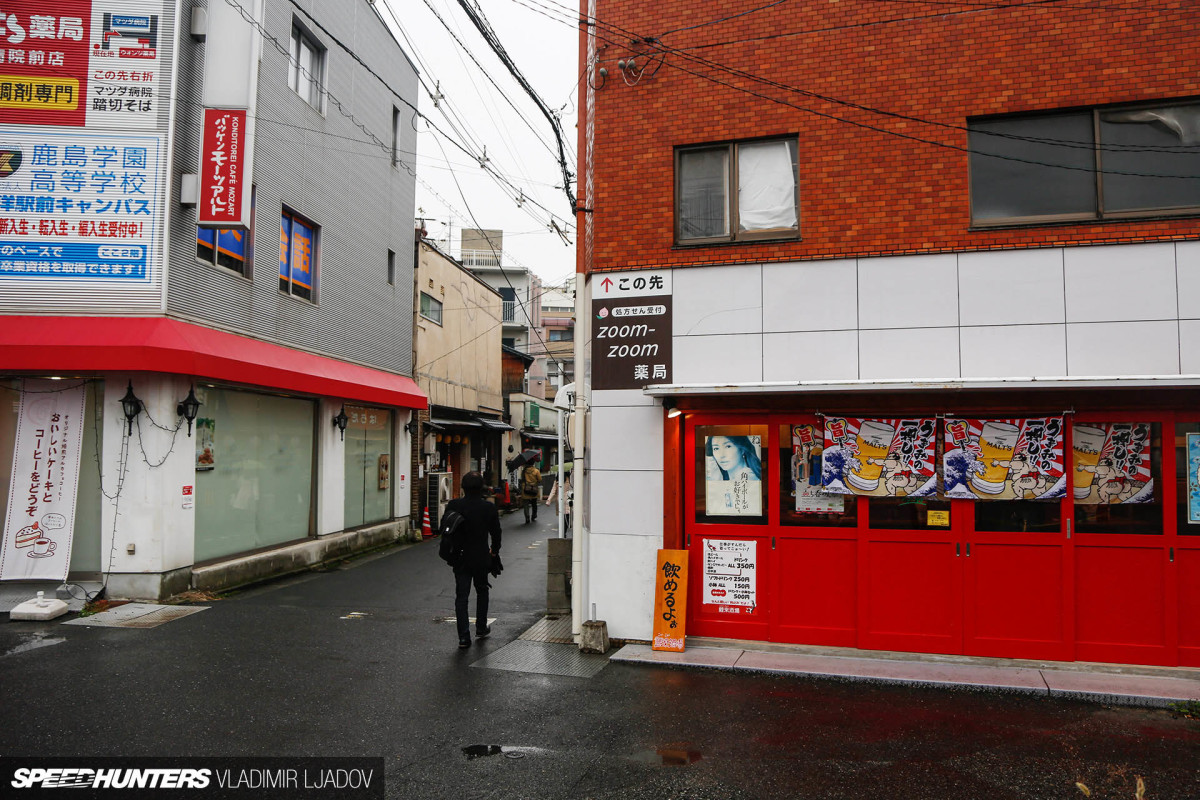
Mazda’s head office, museum, factories, their own port and privately-owned Toyo Ohashi bridge were all situated just a few stops from my station, so visiting was a must.
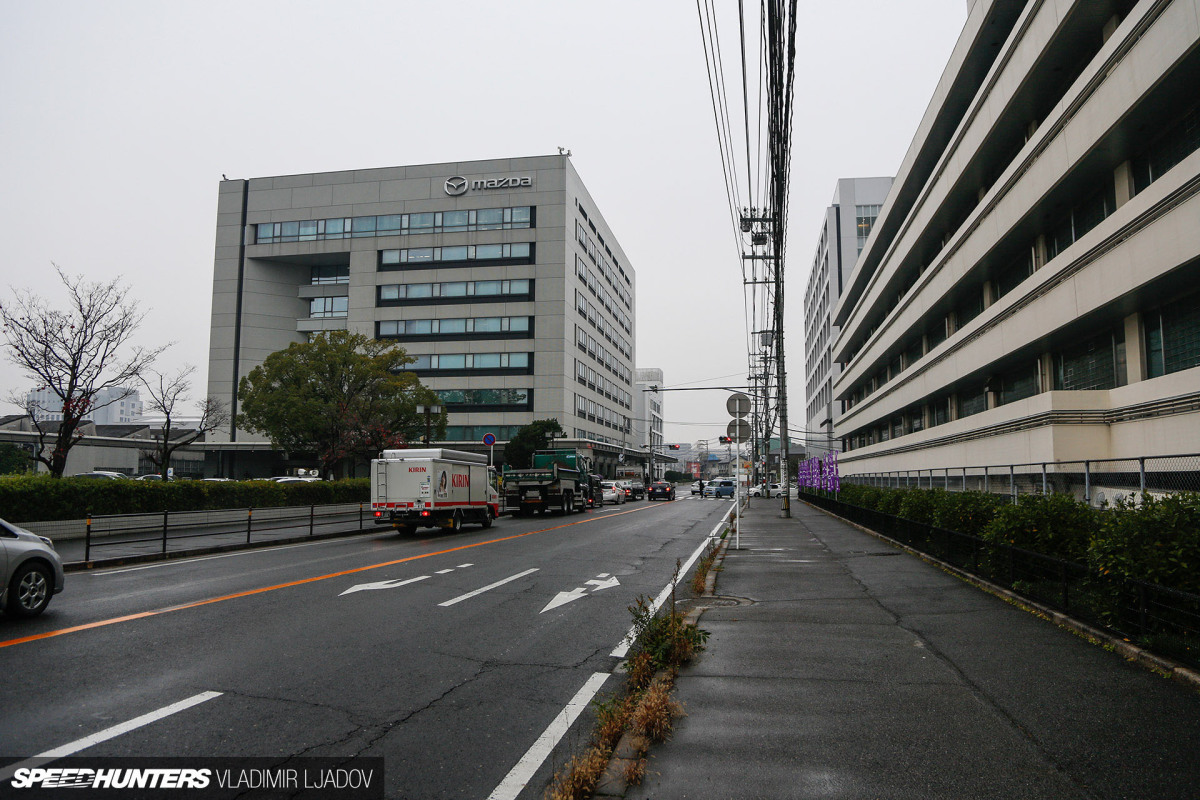
Usually it’s easy to enter a museum, but the Mazda Museum is located inside the Ujina No. 1 Plant, and you need to book a tour to get inside. I should have read the website information more thoroughly and not just turned up expecting to be let in, but all was not lost as I was able to book for the very next day.
HistorySoon enough I was able to stroll into the lobby, walk around a gorgeous green first-gen RX-7, and sit in the new MX-5 while noting to myself that its interior is not a lot different to the one in my 20-year old Miata…
Shortly after, our group was invited to board a bus that took us through factory premises along the Enko River and onto the beloved bridge. The friendly staff asked us to refrain from taking any pictures until we arrived at the museum itself.
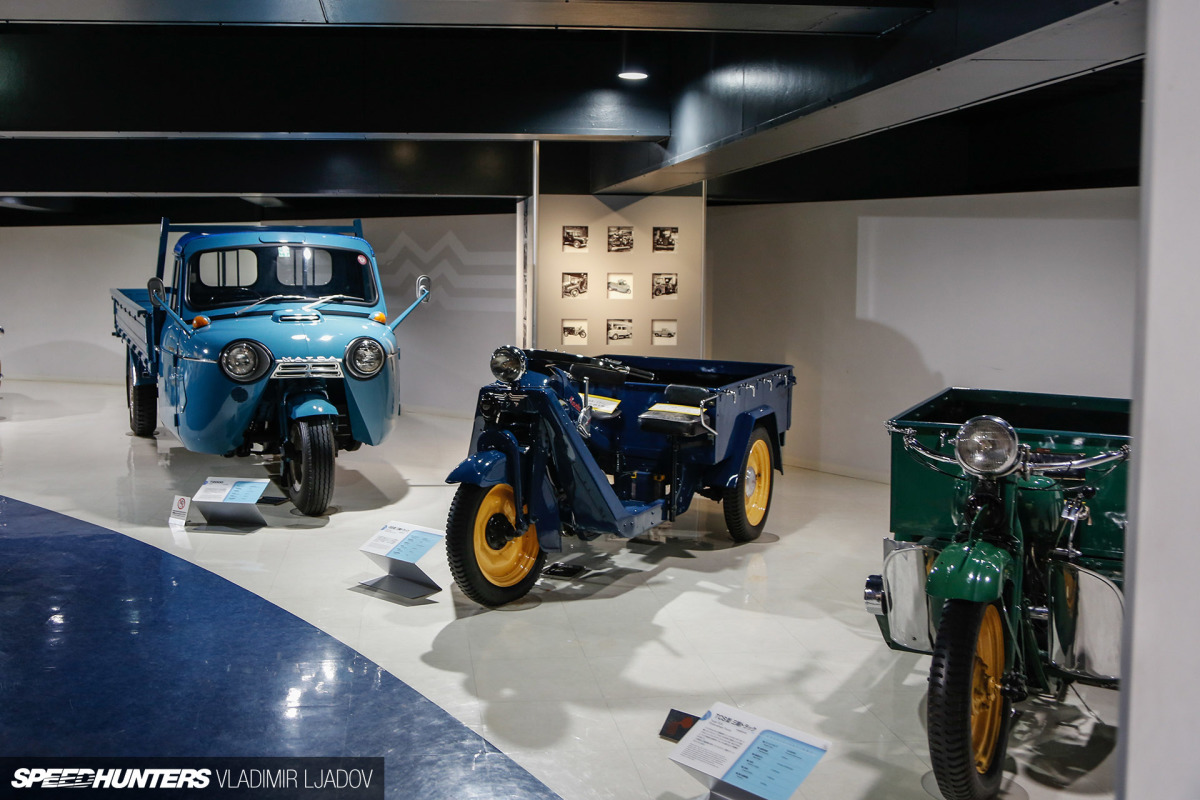
Mazda played a huge part in rebuilding Hiroshima city from the ruins. They understood that in this time of need their motorized three-wheeler trucks would prove to be very helpful to the nation, and amazingly their production resumed only four months after the August 6, 1945 bombing. The biggest hold up was the lack of tires.
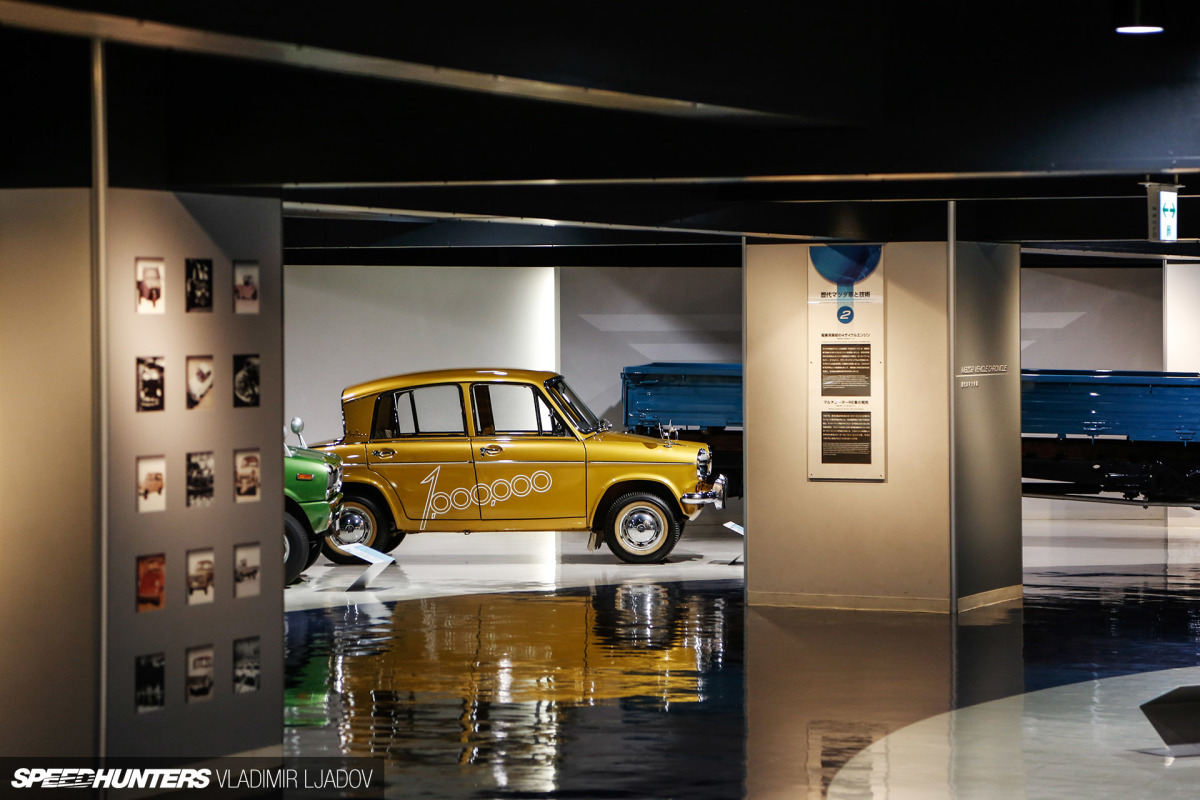
Their three-wheeled trucks were sold up into the ’70s, while in 1960 Mazda produced their first passenger car, the R360. By 1963 – and with the help of their first four-door passenger car, the Carol 600 – the factory had reached cumulative production of 1 million vehicles.
Through the ’60s and ’70s, Mazda produced a number of passenger cars. Models like the Familia, Capella and Luce brought real prosperity to the company.
Rotary Engines & RacingIn July 1961, Mazda entered into technical cooperation with NSU/Wankel (formerly in West Germany), and began experimenting with rotary engines. A team of engineers were sent to the German company, and immediately realized that ‘chatter marks’ were an obstacle in the development of the engine.
Early rotary engines saw abnormal wear on the chrome plate finish within hours, so Mazda appointed Kenichi Yamamoto and a team of 47 young engineers to solve the problem.
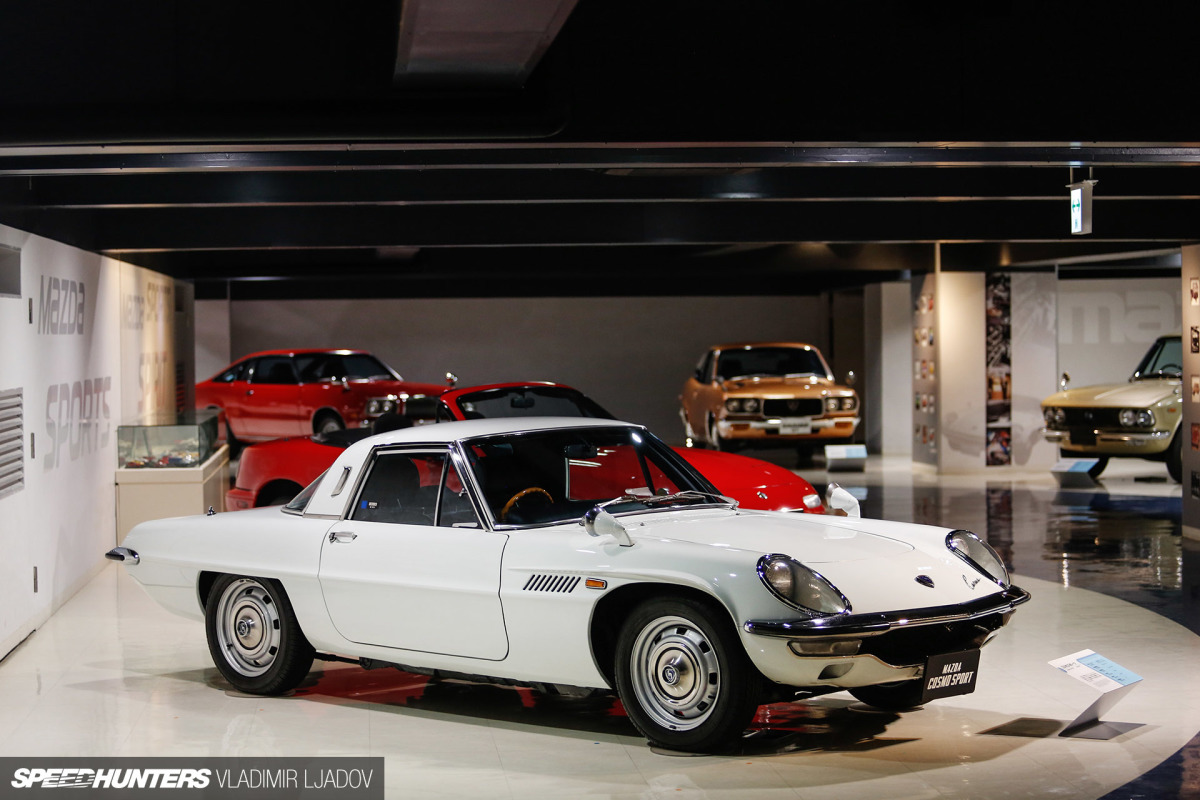
In 1963, a cross-hollow seal with a cross-shaped hole near the apex of the seal was developed and tested. This innovation opened the door for bringing rotary-engined cars to the road. On May 30, 1967, the Cosmo Sport was premiered, becoming world’s first mass production car powered by a two-rotor engine.
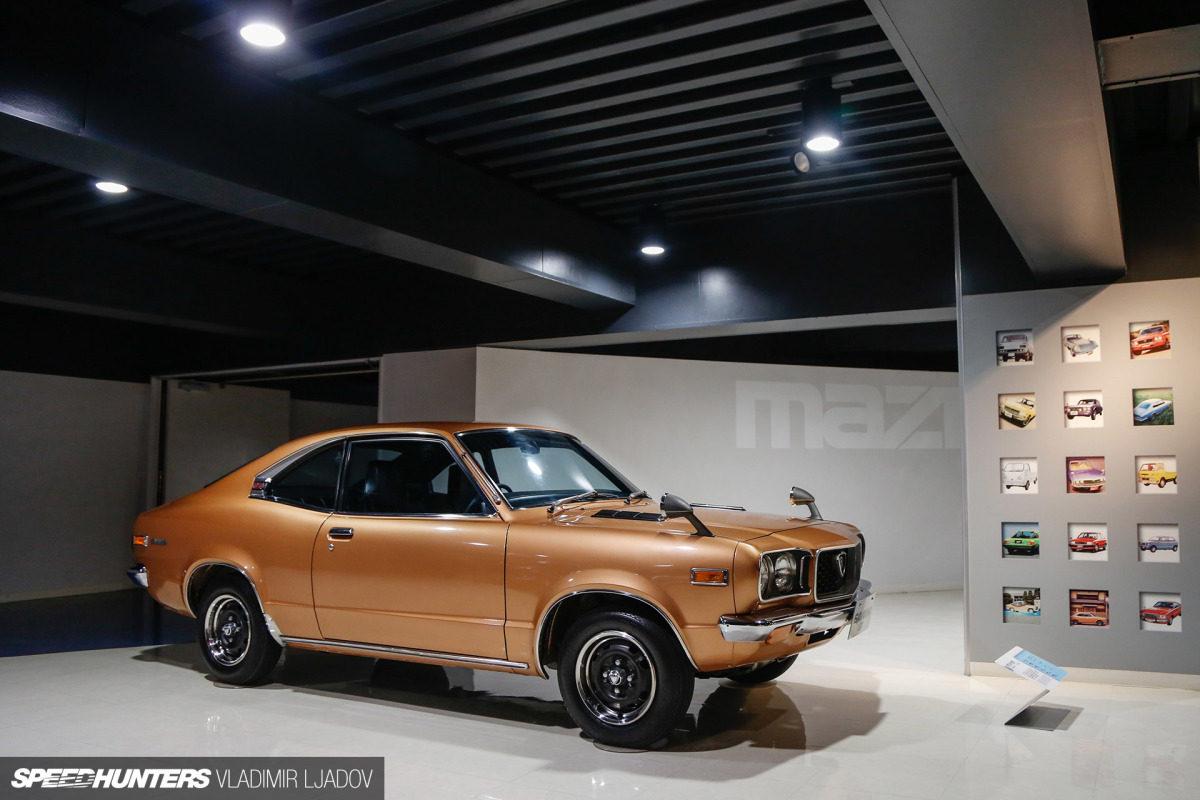
Rotary engines gave Japanese buyers an advantage when it came time to pay the annual road tax, as their capacity was below the higher 1.5-liter tax bracket. As soon as Mazda premiered the Cosmo, they began debuting other models with rotary engines.
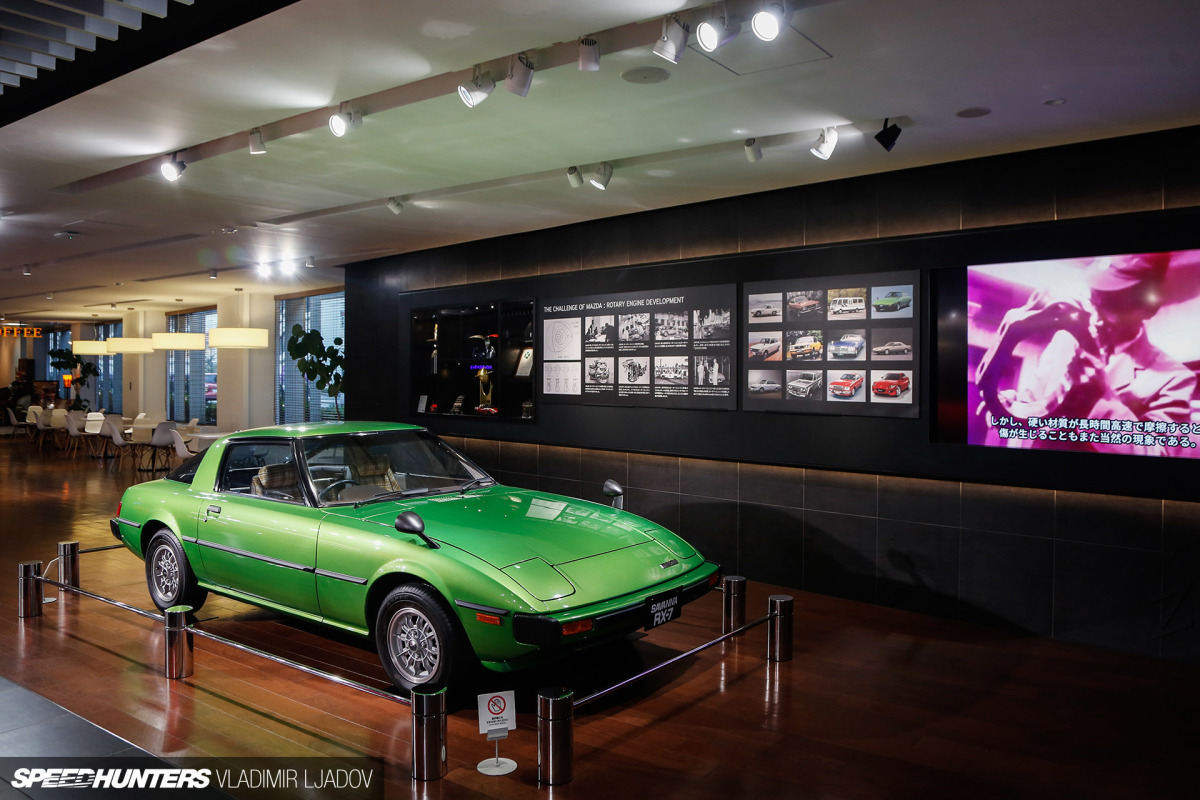
In 1978, the Mazda RX-7 was born. It was quickly noticed by the motor racing community, and soon after took the 1980 and 1981 British Touring Car Championship titles, as well as victory at the Spa 24 Hours in 1981.
By 1990, the RX-7 had won over 100 races in the US and become the most successful car in IMSA GT Championship history.
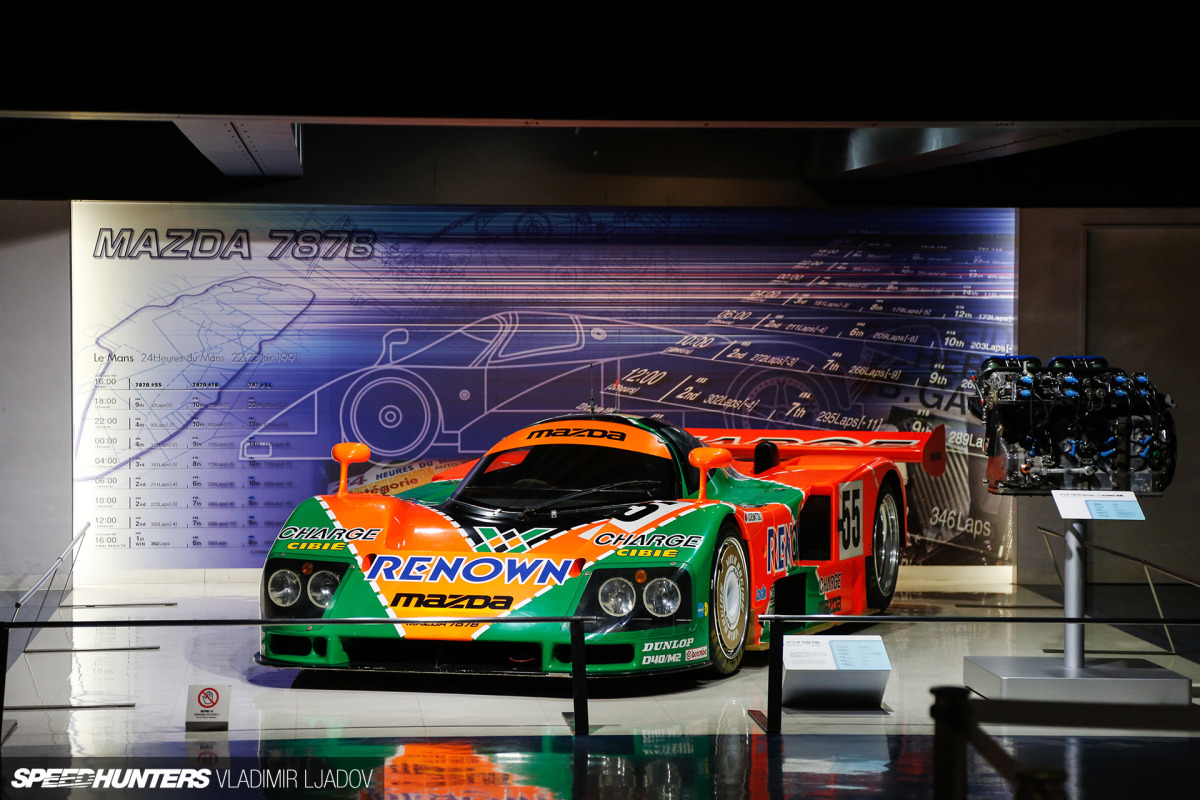
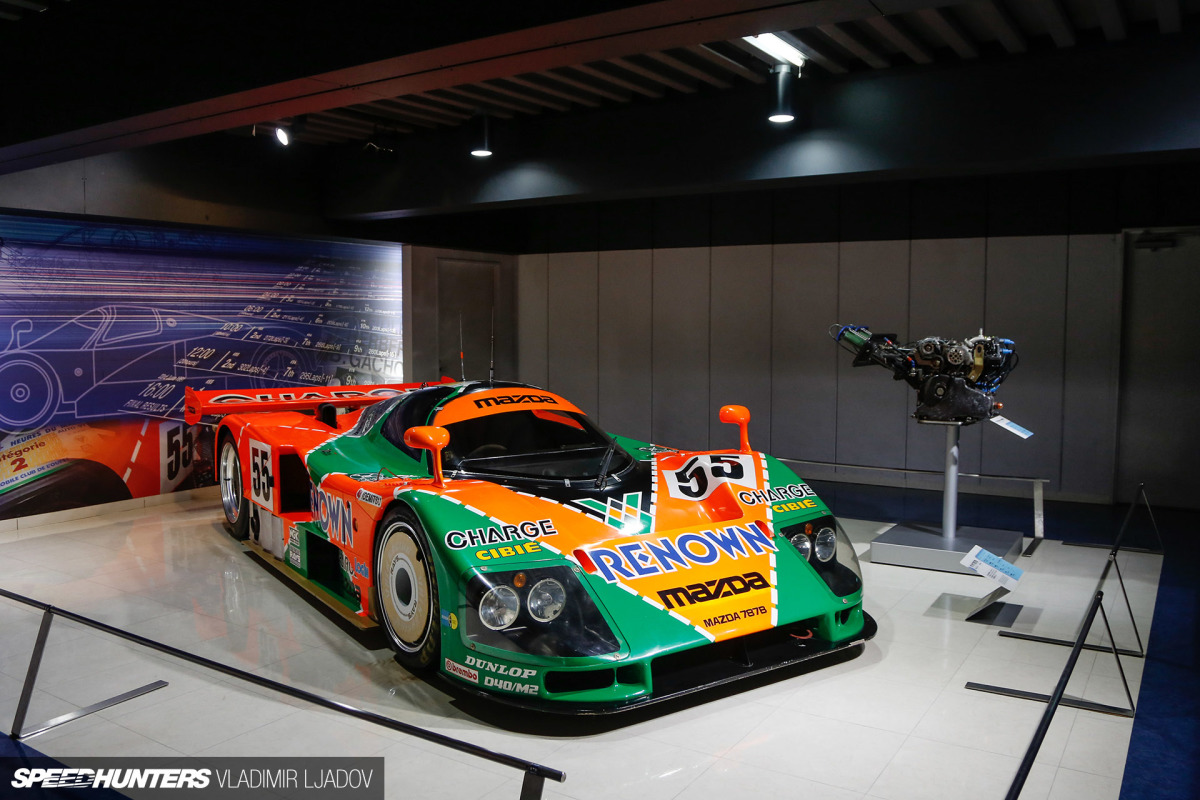
While the cheerful tour guide was still speaking about the early passenger cars, I went a bit further and noticed the main tourist attraction: the 1991 Le Mans-winning 787B Group C car that produces over 700 horsepower from its naturally aspirated 2.6L four-rotor engine. The R26B took the 787B to 210mph (338km/h) during the race, and to this day it’s the only non-piston-engined car to win Le Mans.
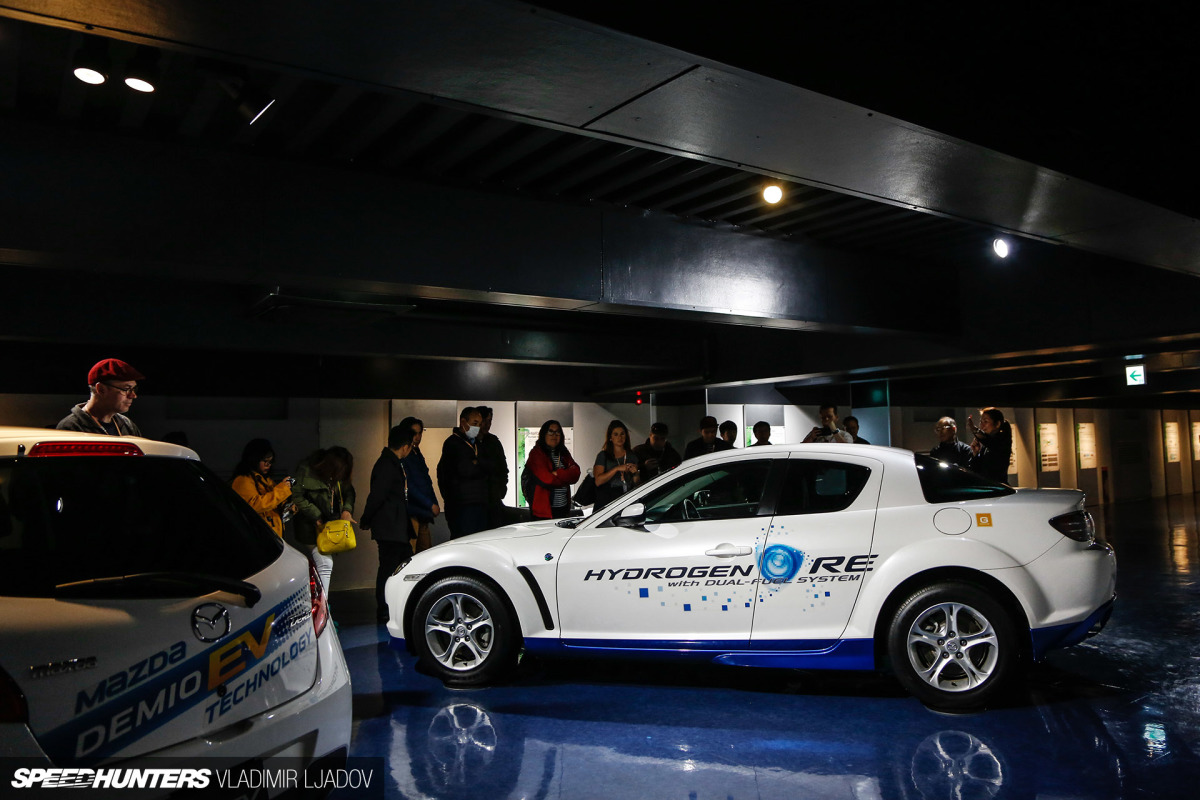
Back when I visited the factory there was no news about a resurrection of the rotary engine, but we were assured that research, development and testing has never stopped. Recently, Mazda confirmed that the rotary is coming back in a hybrid setup. I mean, that’s a start…
Assembly Line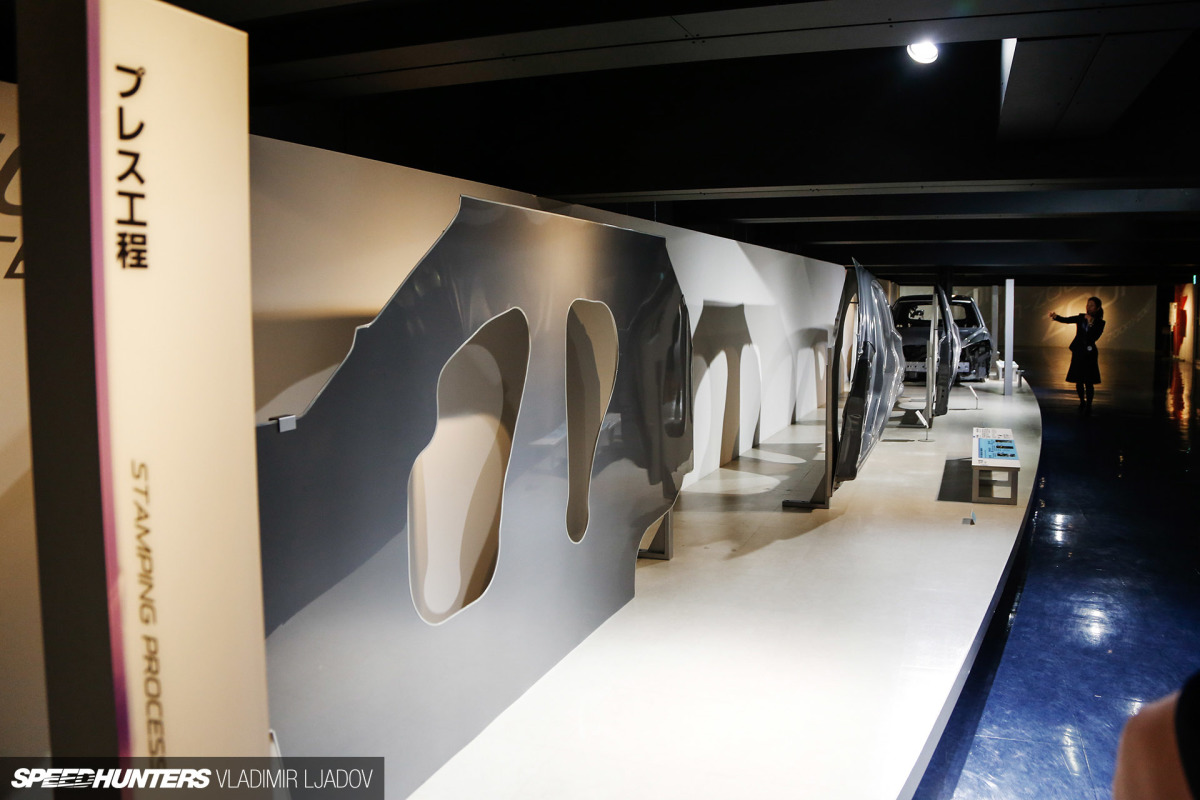
During the tour, visitors can see the manufacturing process and the technical side of things. It reminded me one more time that Mazda focuses on driving experience and safety of their passengers.
Photography of the actual assembly line was prohibited, which was unfortunate as this was the most impressive part of the tour. Mazda pioneered the mixed production line, where vehicles are built in the order that customers request them, all on the same line.
Employees move from fitting the dash for an SUV to putting a roof on a convertible. It sounds complicated, but reality showed that the process works extremely well.
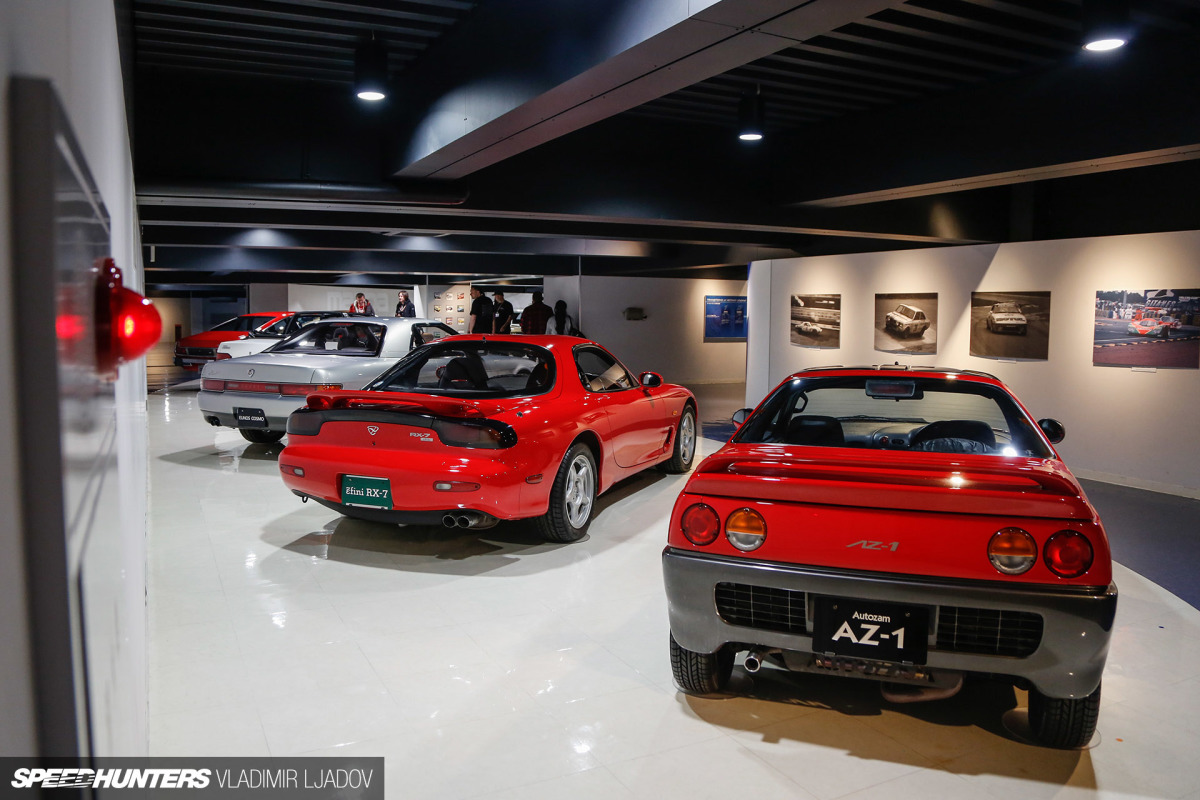
After the assembly line, we had a few more minutes to look around the museum, after which we were taken back to the headquarters building. By the end of the tour I had personally gained a greater appreciation for this special car manufacturer. You can learn more about Mazda’s heritage on their own website.
Mazda are not the largest, but who doesn’t like rooting for the underdog?
Vladimir Ljadov
Instagram: wheelsbywovka
because@wheelsbywovka.com
www.wheelsbywovka.com
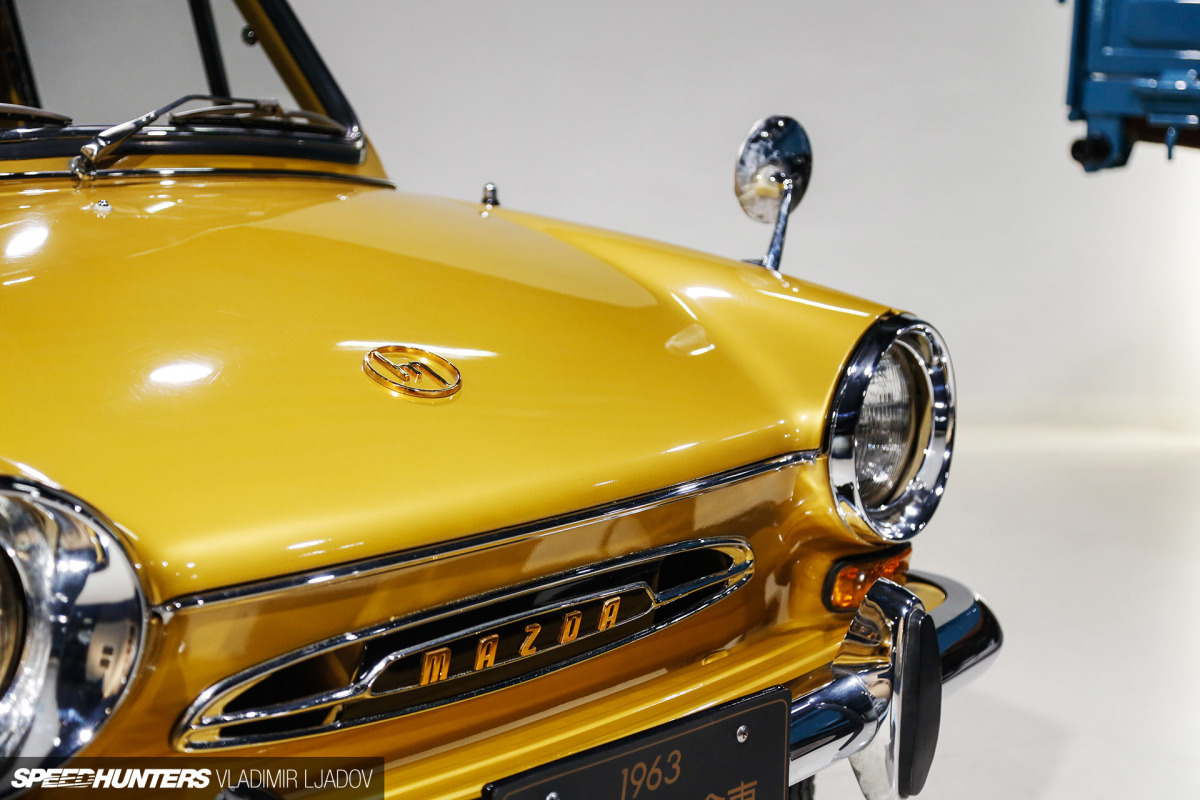
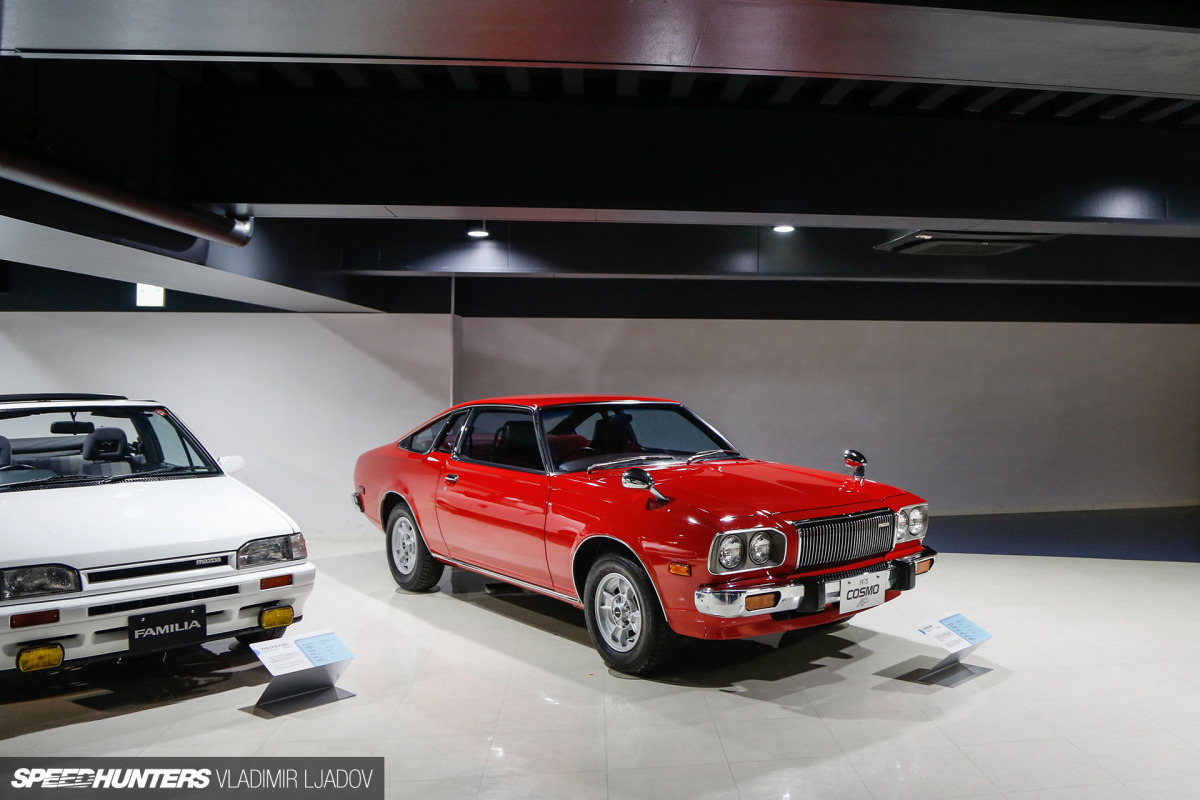
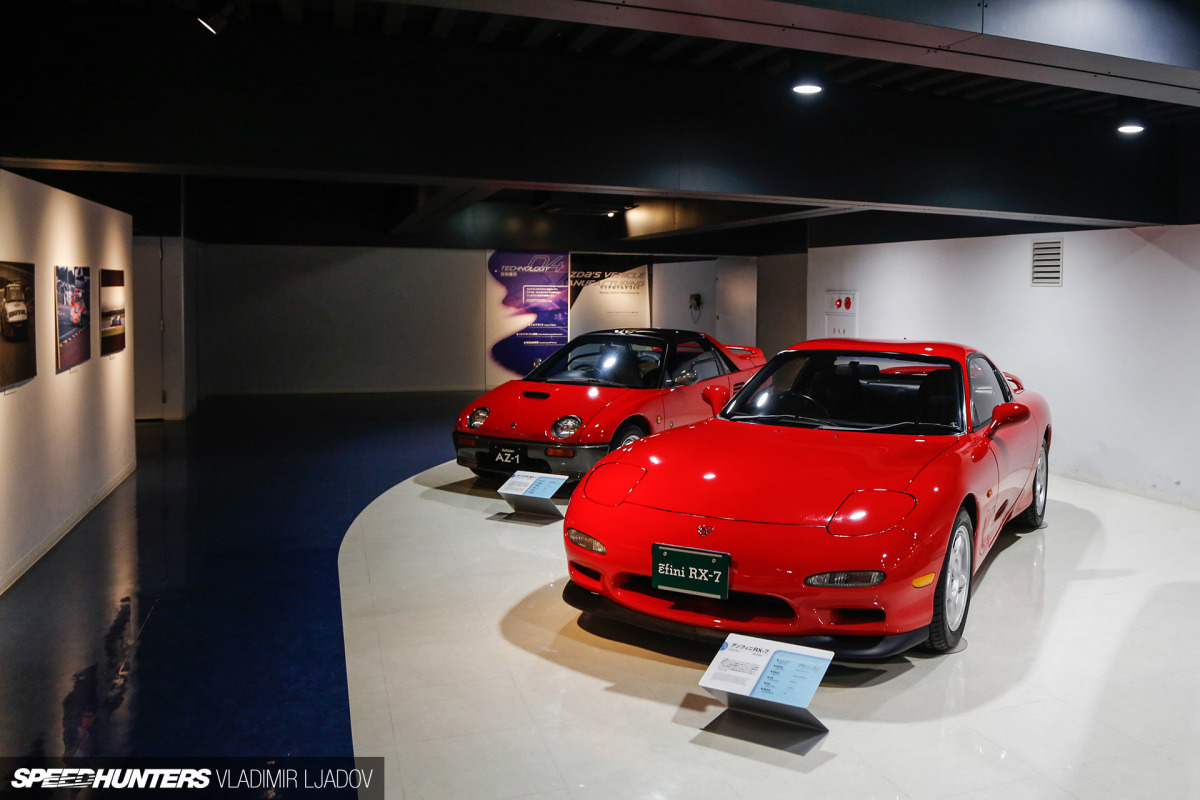
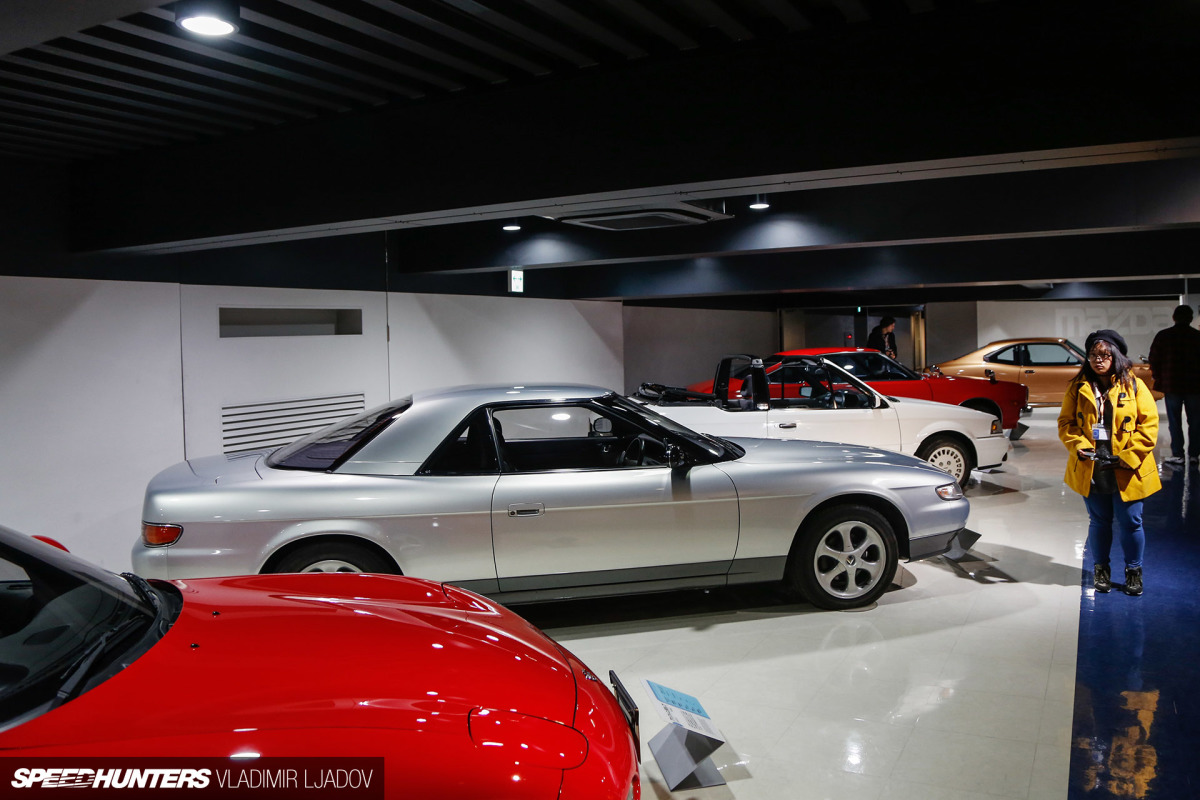
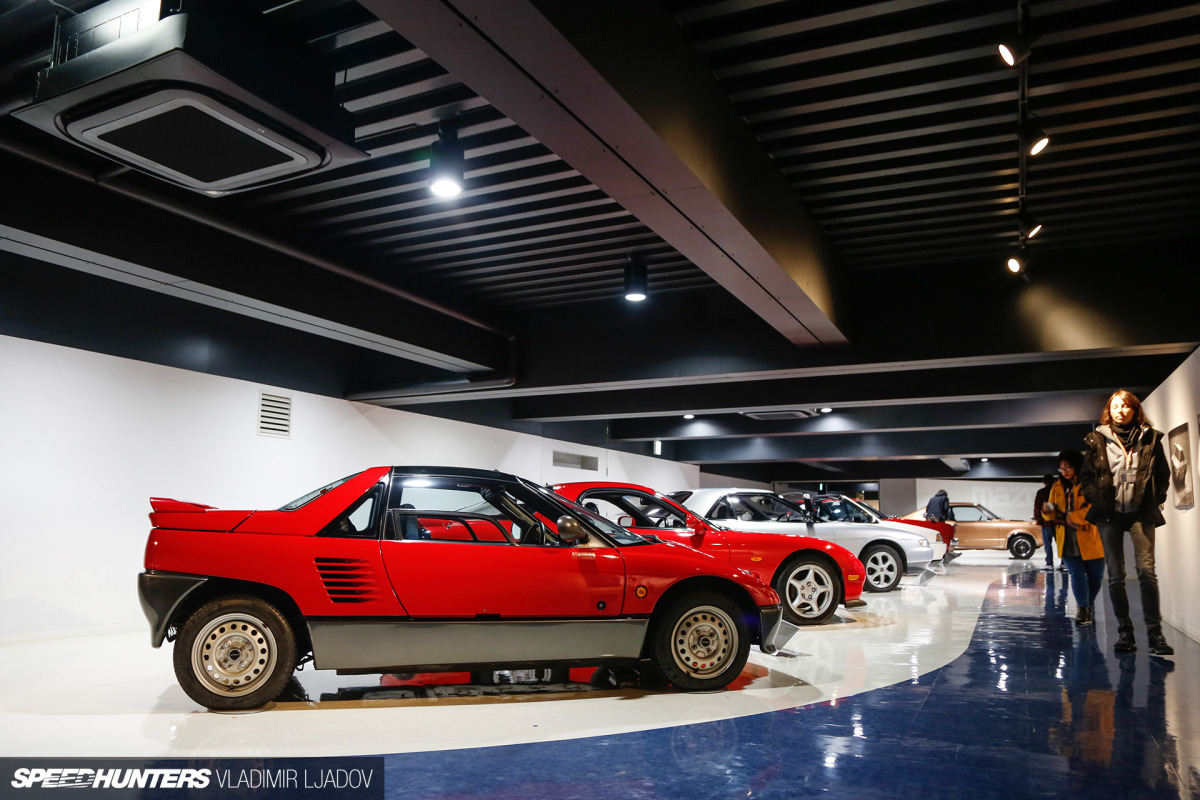
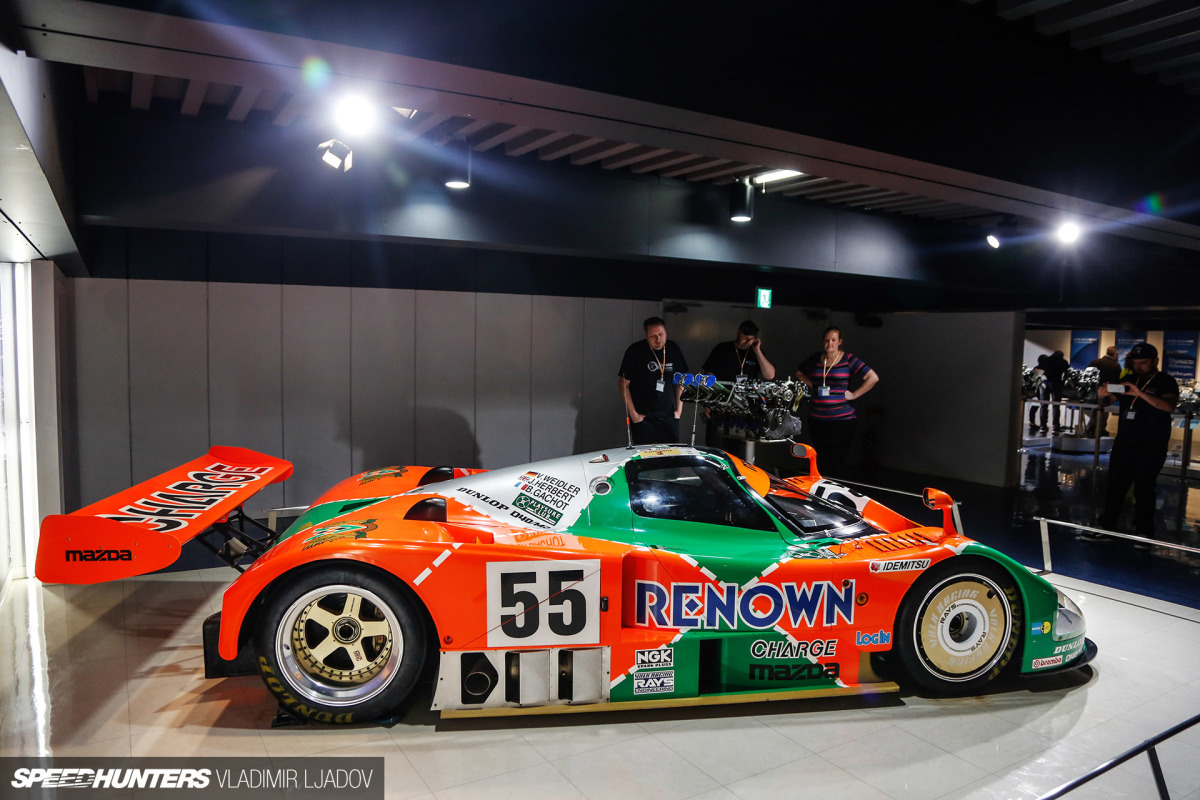
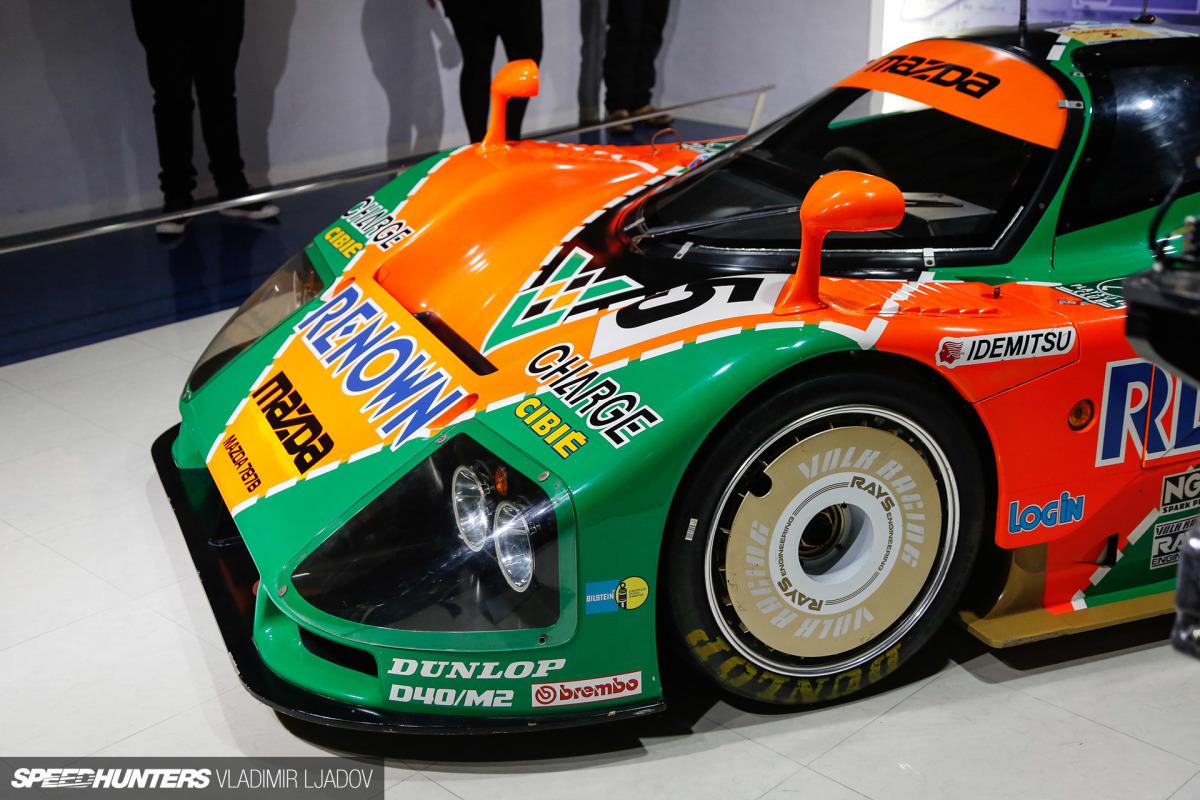
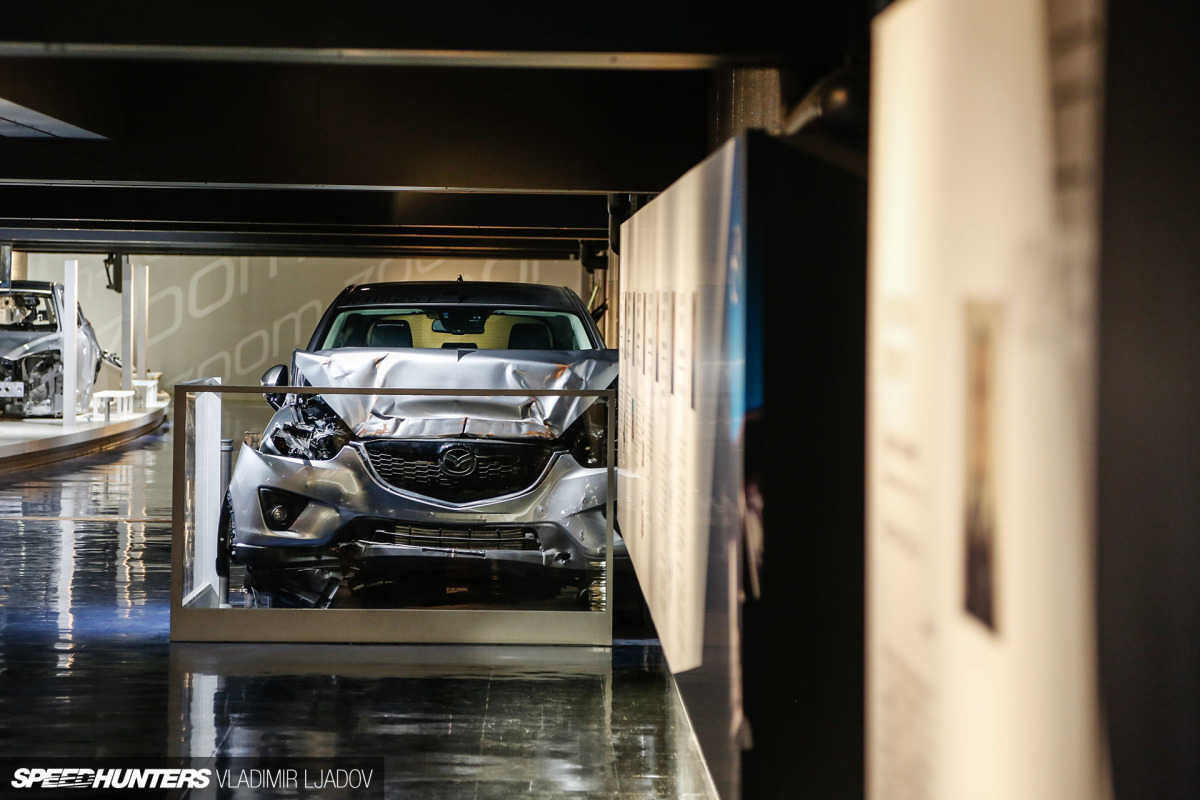

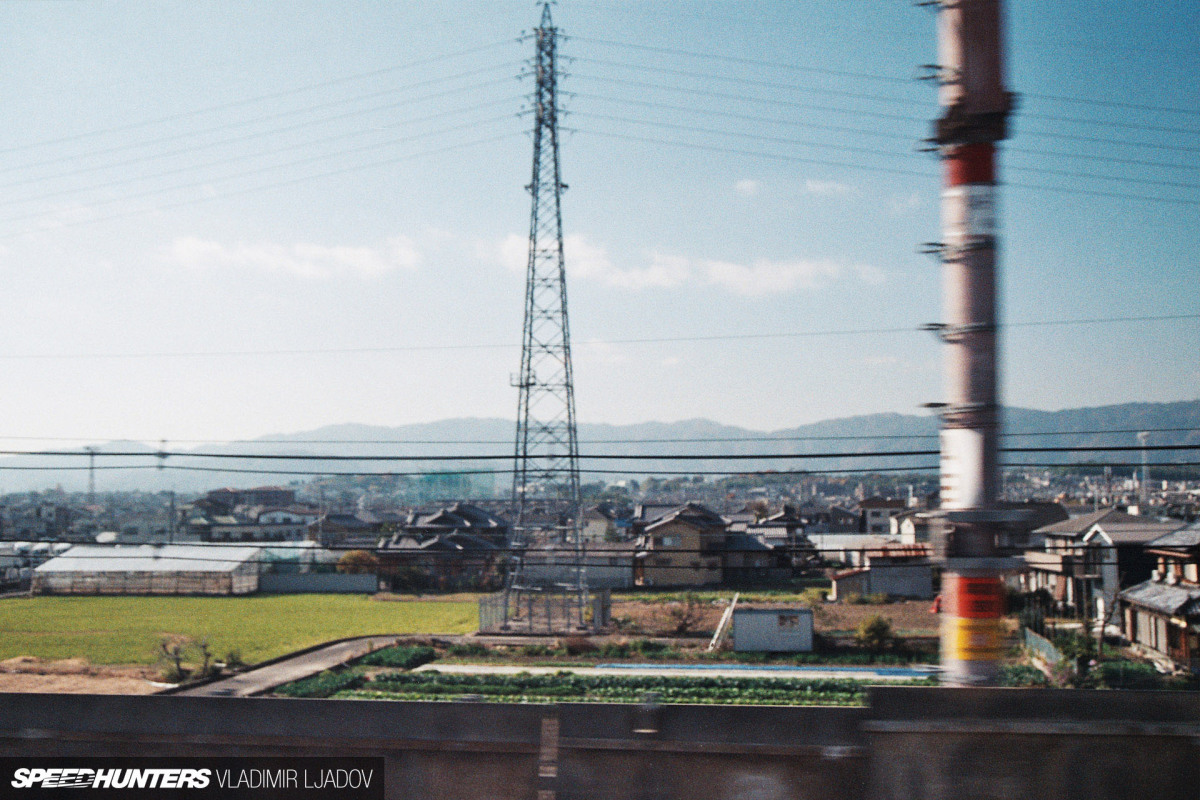

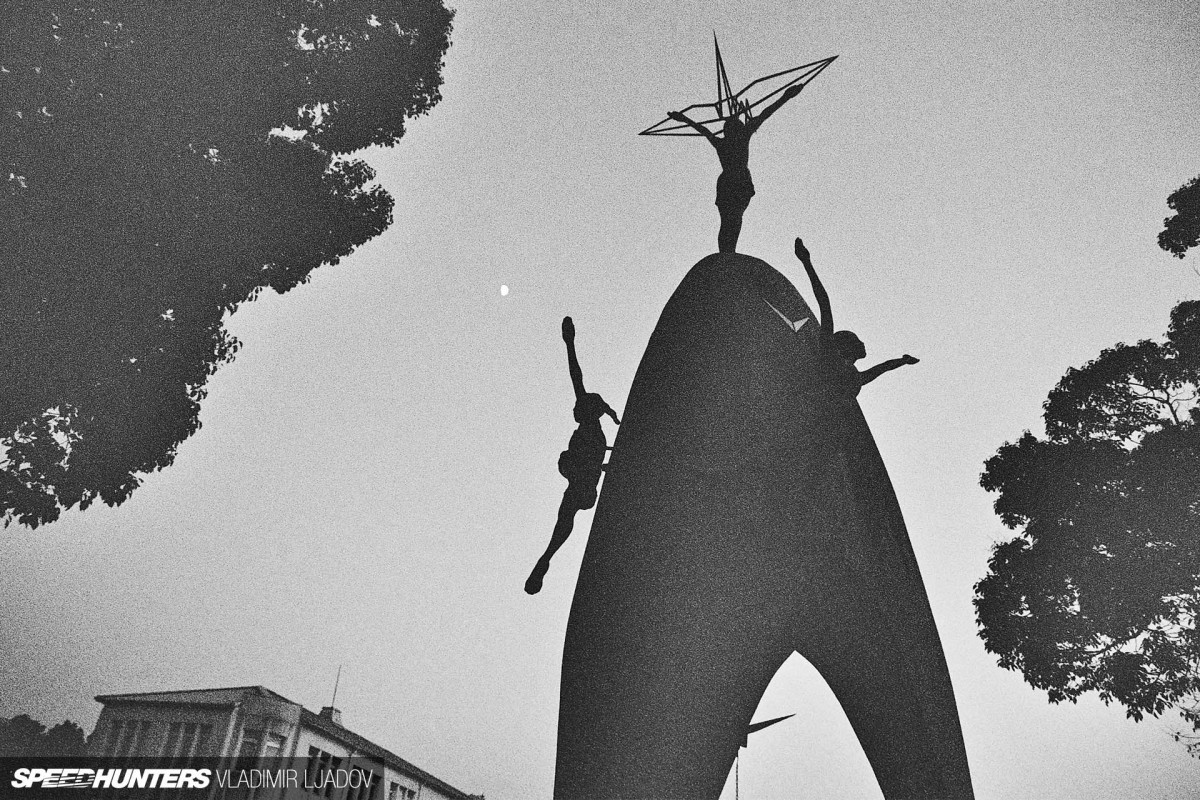
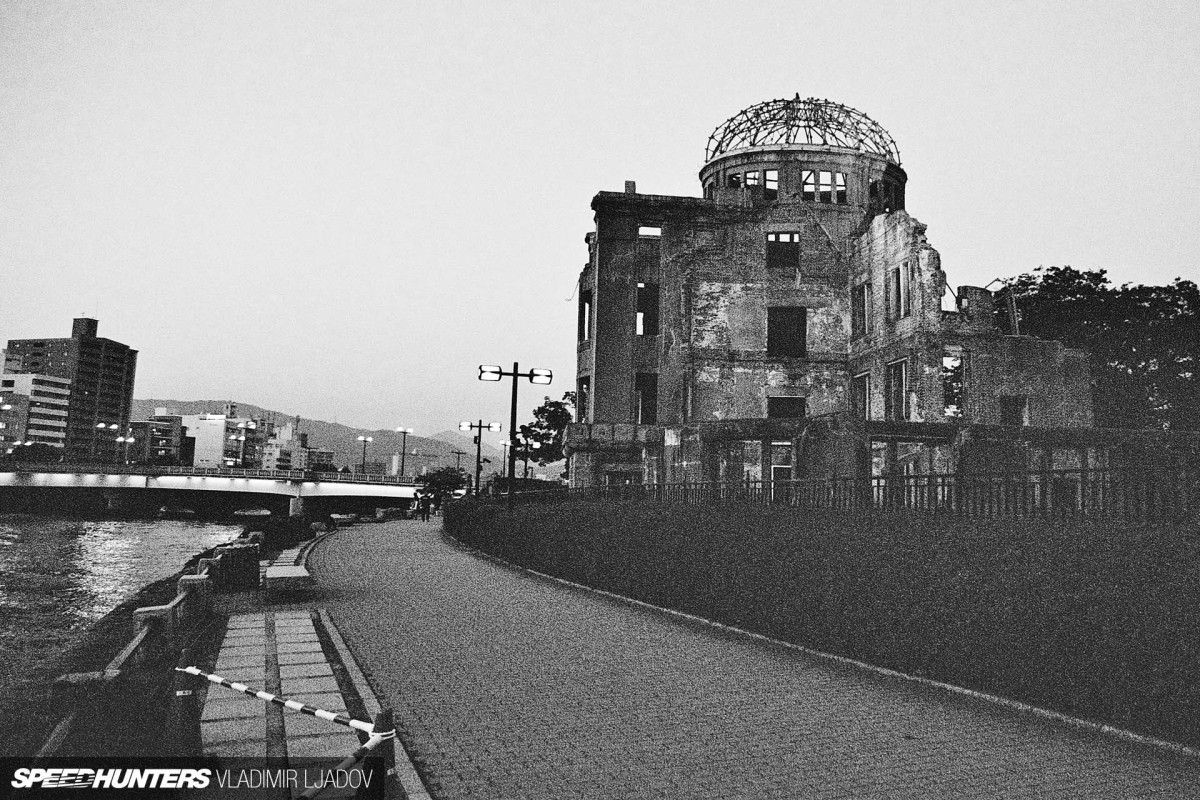
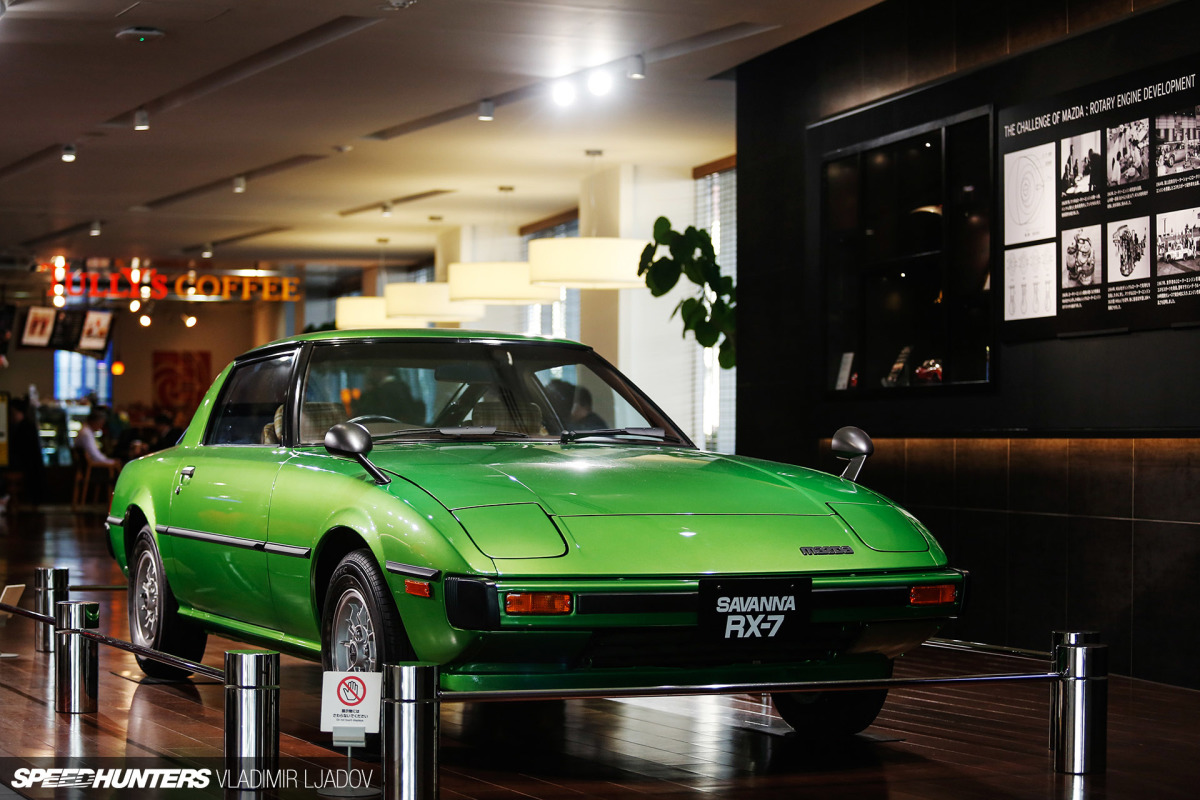
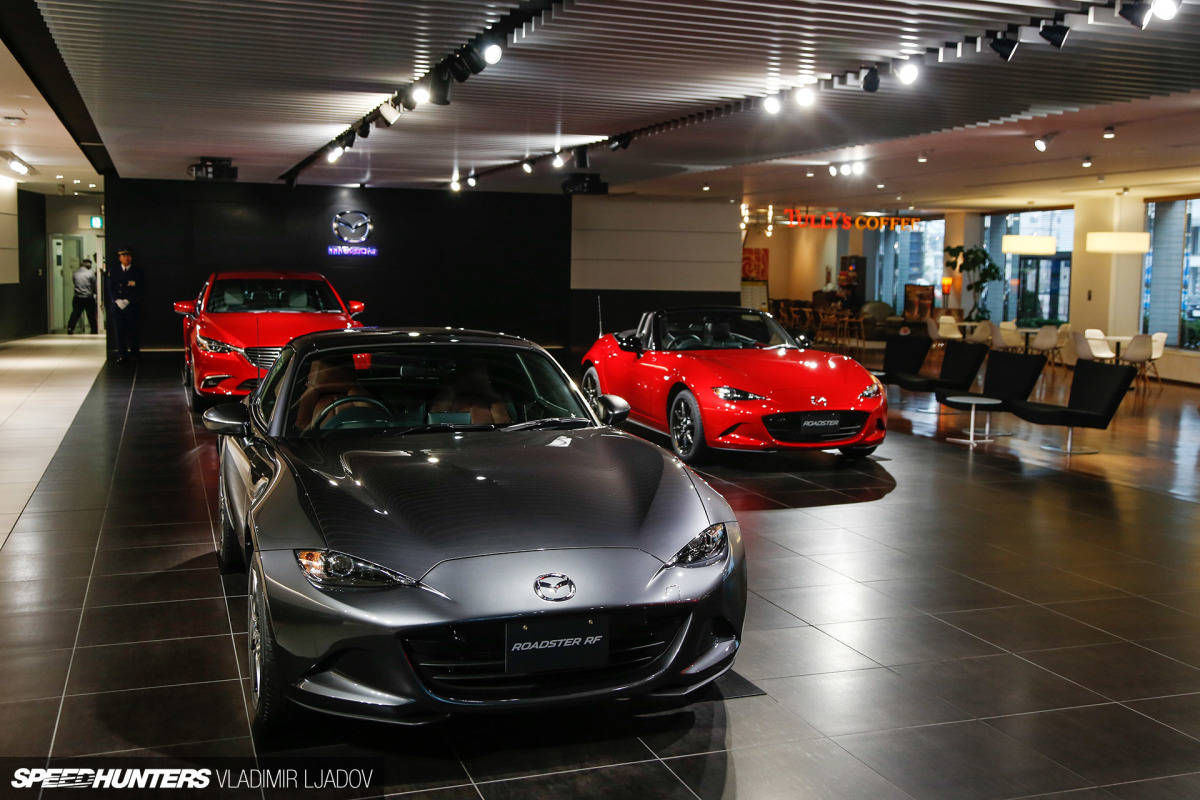
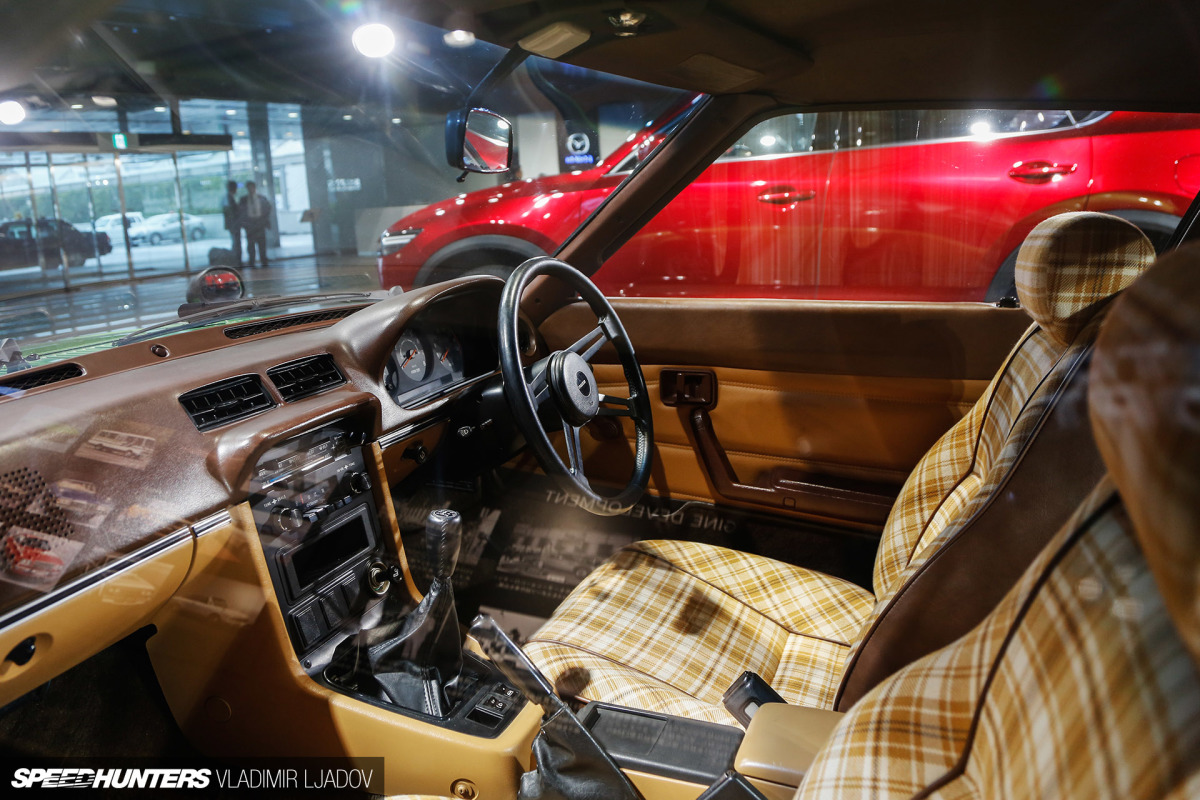
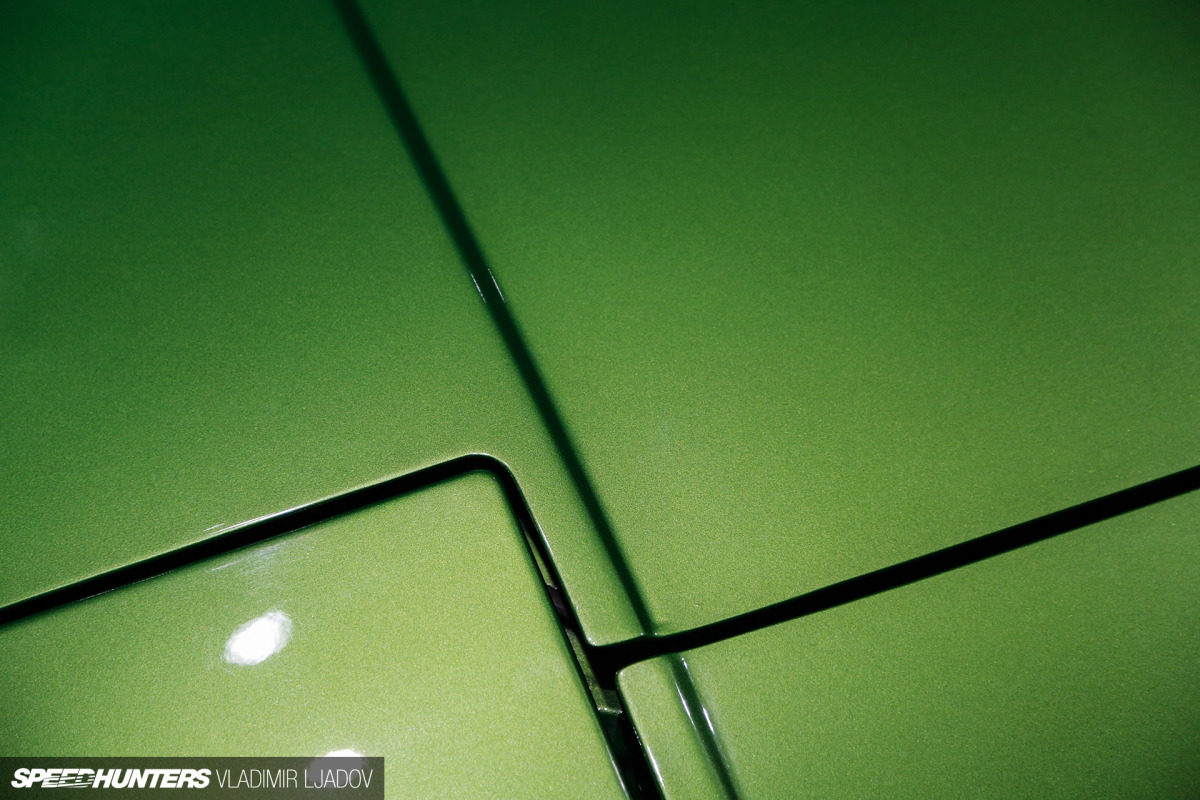
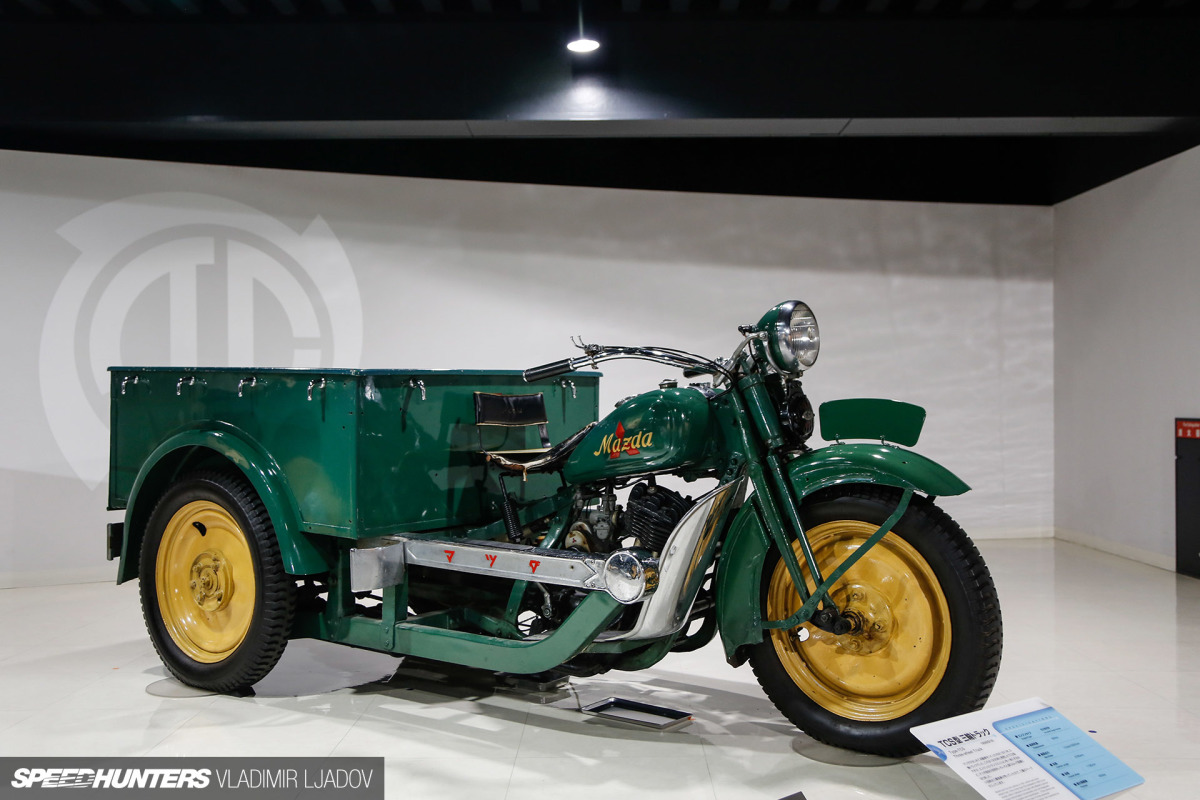
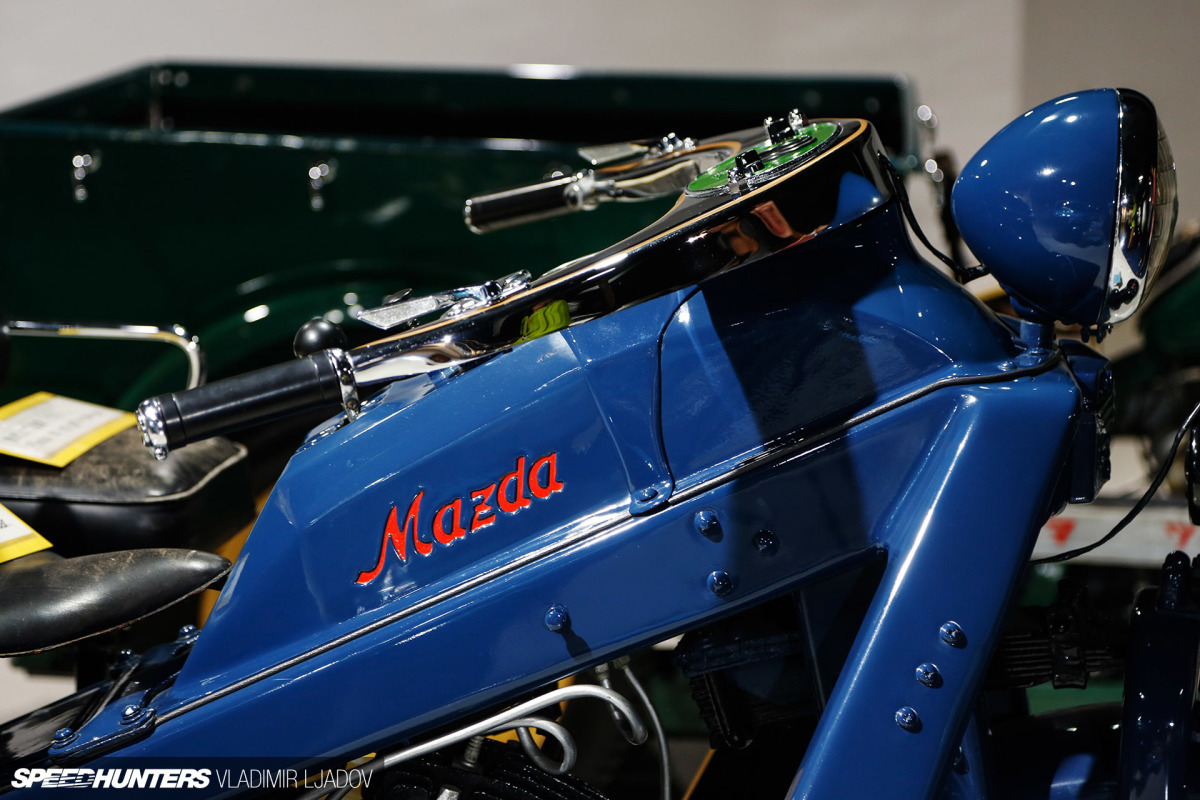
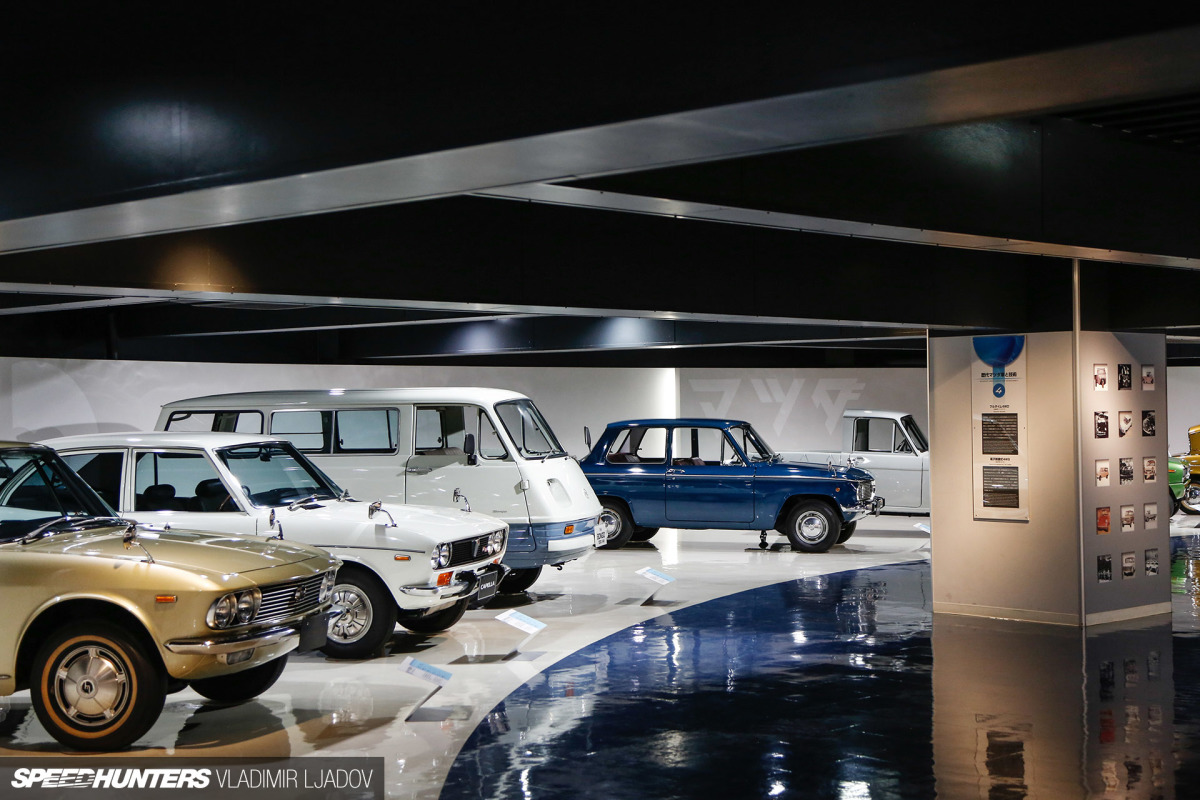
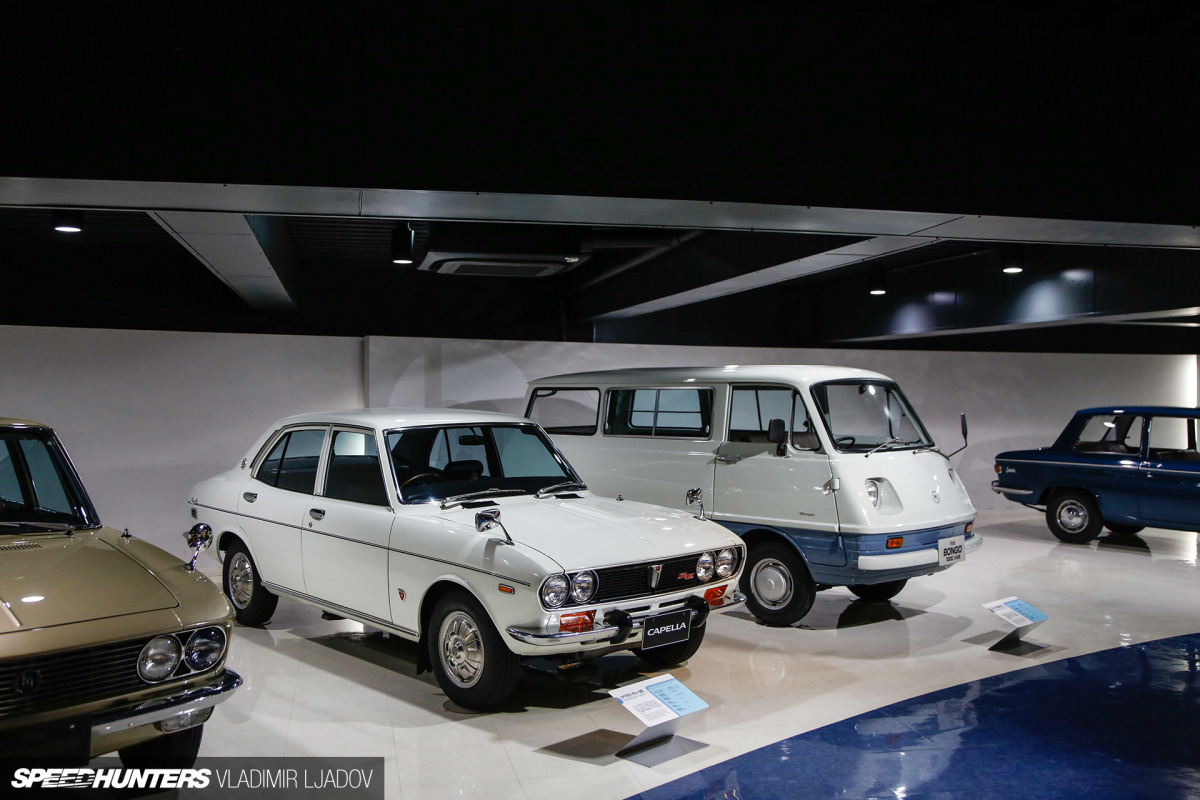
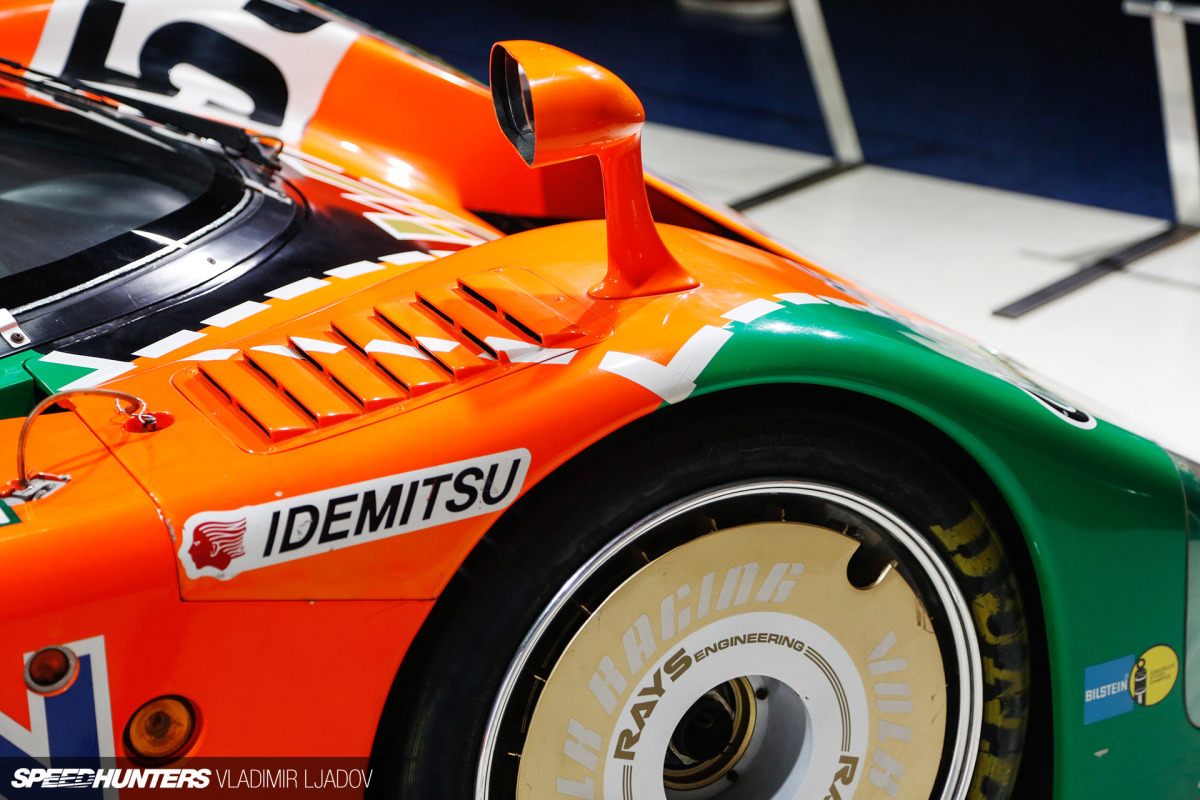
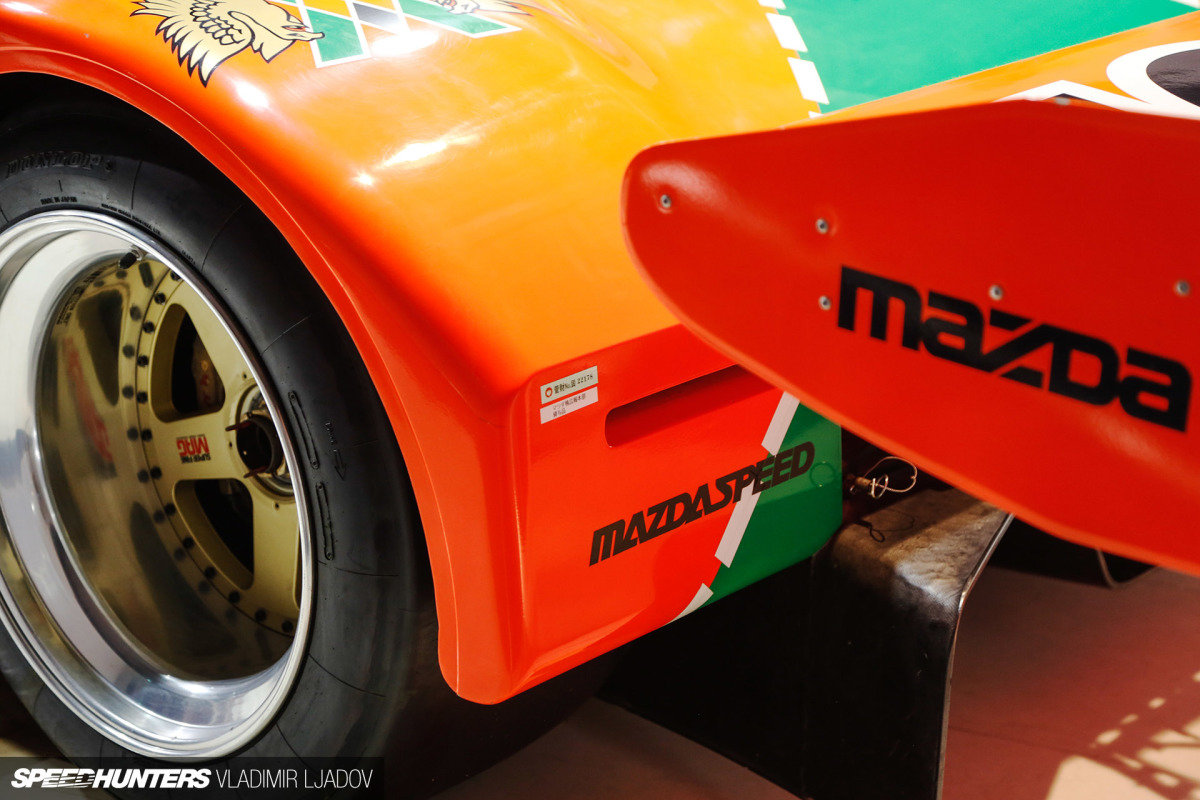
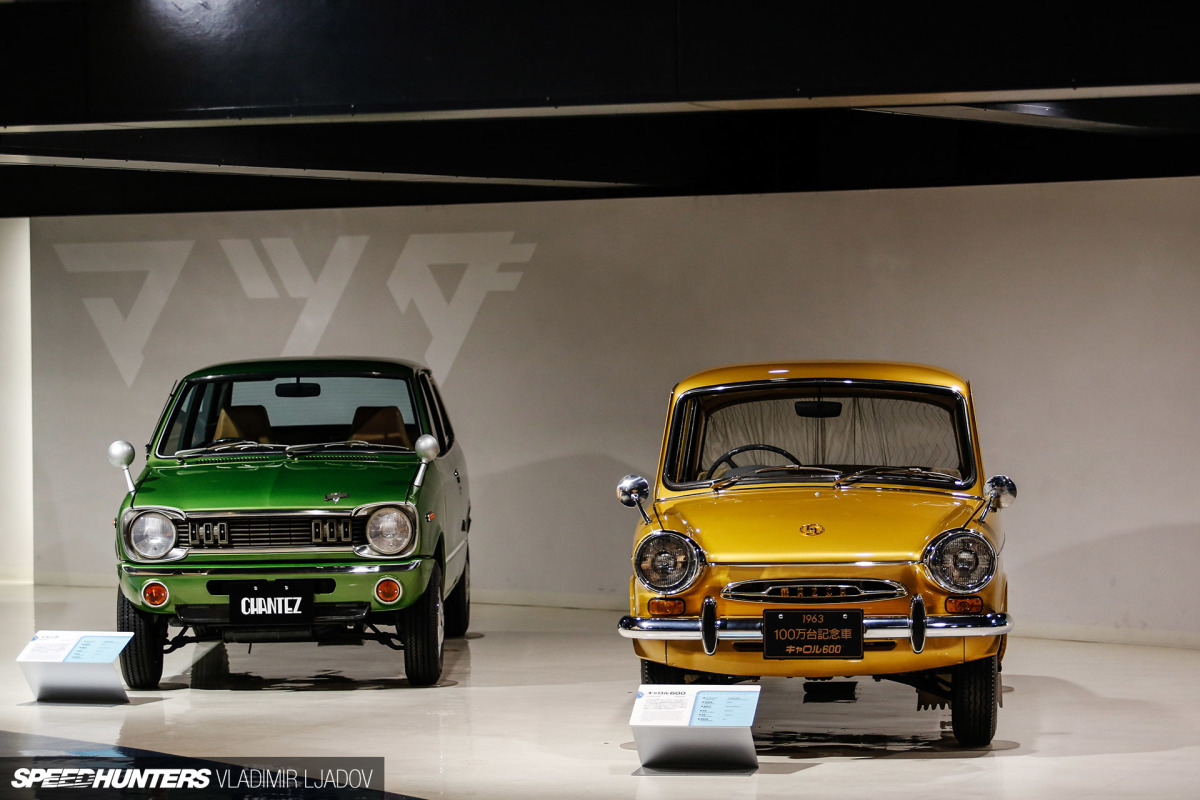
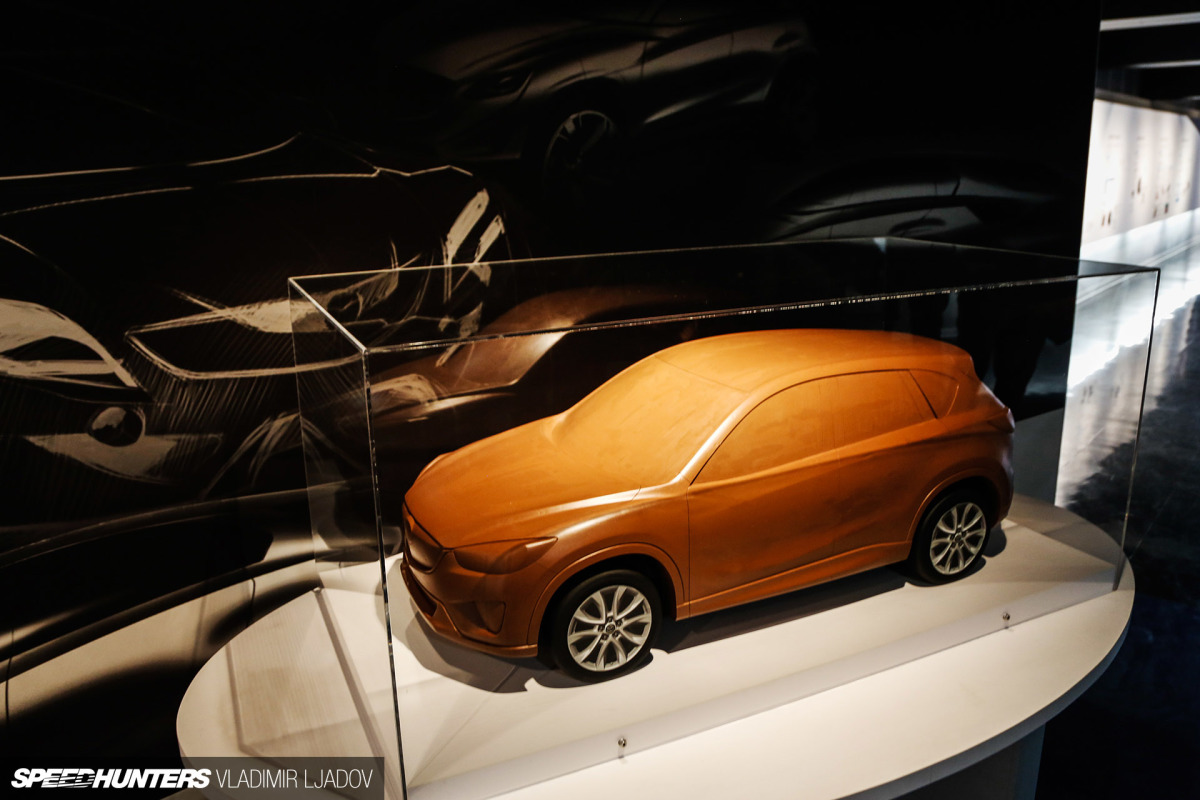
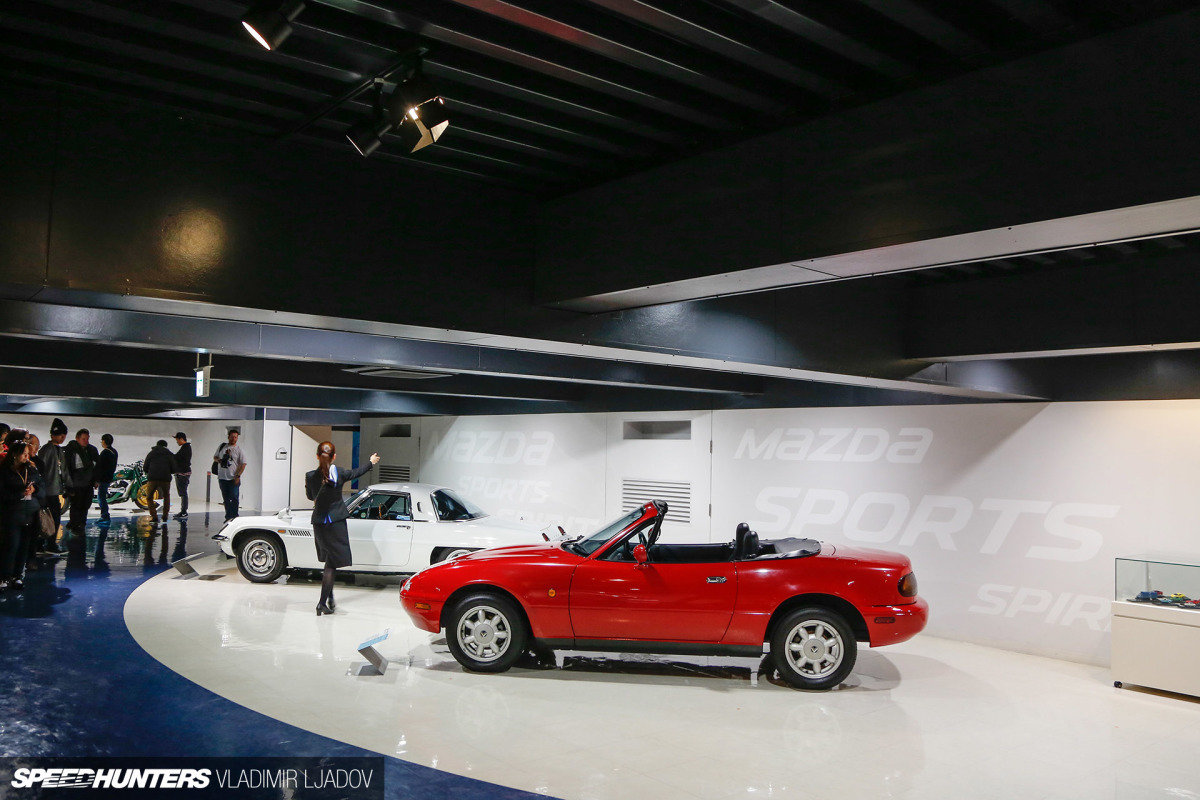
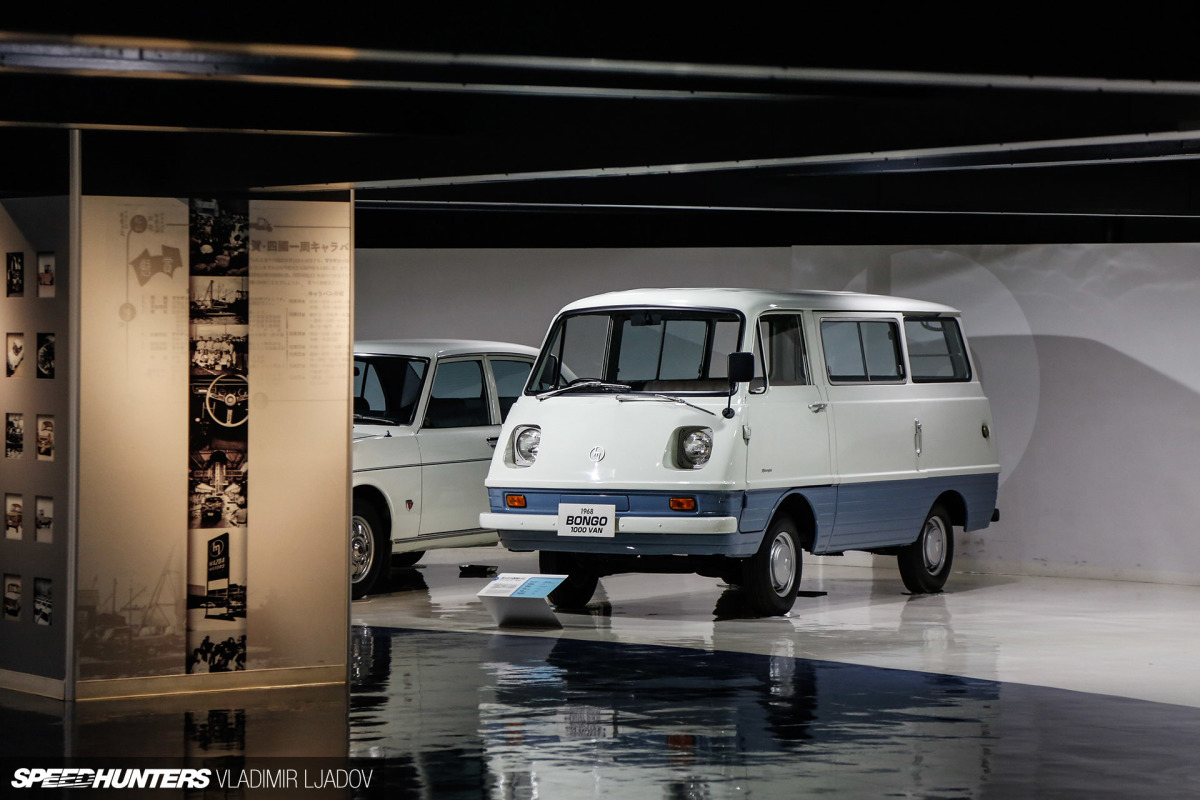





I did the same tour when I was in Japan last year - such a cool experience seeing the the 787B and the trophies in real life. A lot of cool history in that museum, and you get an MX-5 wristband at the end!
Great photos too, we were hurried through and didn't really get a chance to spend a lot of time with the cars.
Yes! I have that wristband as well
oooooooooh pretty colors...
The placement of the number plate on your MX-5 makes the car look like it's doing a cheeky tongue out face.
Back on topic, love that 787B. And they also display crash tested cars there? That's interesting.
i've always had a natural appreciation for mazda for making even their mundane passenger cars feel sporty. i currently drive an 02 protege es with a stick shift and so far it's the most fun car i've ever driven. it's like they've injected miata dna into its fwd platform and made it enjoyable to drive day after day. 310k miles or nearly half a million km later and it's still going strong hehe
Definitly with you on the sporty feel !
I daily drive a Mazda 2 (Demio from 2009), only 75 hp but a lot of fun during spirited drives !
And after 260k kms, it still lokks brand new and never had a mechanical problem.
'Also, why have so many car guys had a Miata in their life at some point? Do you have an answer?'
Not sure so many car guys have. Pretty sure their girlfriends/mums/sisters have. Maybe even their boyfriends...
This I noticed exclusively in Britain for some reason
Otherwise.. even Koenigsegg's test driver drives an MX-5
Speedhunters Crew - This is a comment that you are cool with? Insinuating that MX-5s are "effeminate" or "gay" (or that either quality is a non- "car guy" thing or a point for derision)? Really?
... to collect his Pomeranian from the parlour on tinting day perhaps. The UK is very inclusive...
Mazda are not the largest but definitely one of the finest
look at all those two door coupes, mazda, take a walk around your own museum and take note^
I wish that Mazda brings back the rotary sports car!
Now have a 90 RX7, GTU, black, beautiful condition. My baby. Had a blue 1987 RX7 loved that car. Also had a beautiful black 1982 RX7..a friend bought it and soon totaled it..boo. My 90 RX7 is just maintains but driven only to keep it humming. Also have a red 2004 Honda S2000..love my car's.
For me, the lack of being able to take photos of parts.. it has made me want to do it for myself, to do the tour. That they will produce another "rota" is awesome
ver más en https://es.beruby.com/portal/search?utf8=%E2%9C%93&search=pirineos%20anso
ver más en http://search.bt.com/result?p=https%3A%2F%2Fmagicospirineos.com%2Fbenasque&Location=Location&channel=Test2
why have so many car guys had a Miata in their life at some point?
Because RWD, nimble fun to drive, affordable, IT IS A ROADSTER. Miata is the EG Hatch of FWD.
Great article and a nice touch to include the memorial park. It seems so ingrained and a huge part of the culture in Hiroshima. Also gotta touch on the Okonomiyaki!!!